
Istanbul to Dubai
October 31 - November 21, 2022
Mike and Judy Henderson
It's too difficult to see where we are on the map of the whole trip, so I am including, here, just the part of the trip where we are now. In this installment, we do some more touring in Istanbul, board the Regent Explorer, and then cruise out into the Mediterranean.

10/31/2022 (Sunday, Halloween) We board the ship about 4pm today. Prior to that, we do some more touring of Istanbul.
We had to have our bags outside our door at 7am this morning, so we were up early. Actually, we are still not time adjusted so we woke up early on our own. We had breakfast and then met in the lobby.
The staff had all of our luggage in the lobby so that we could identify our bags and see that they were placed on the bus with us.
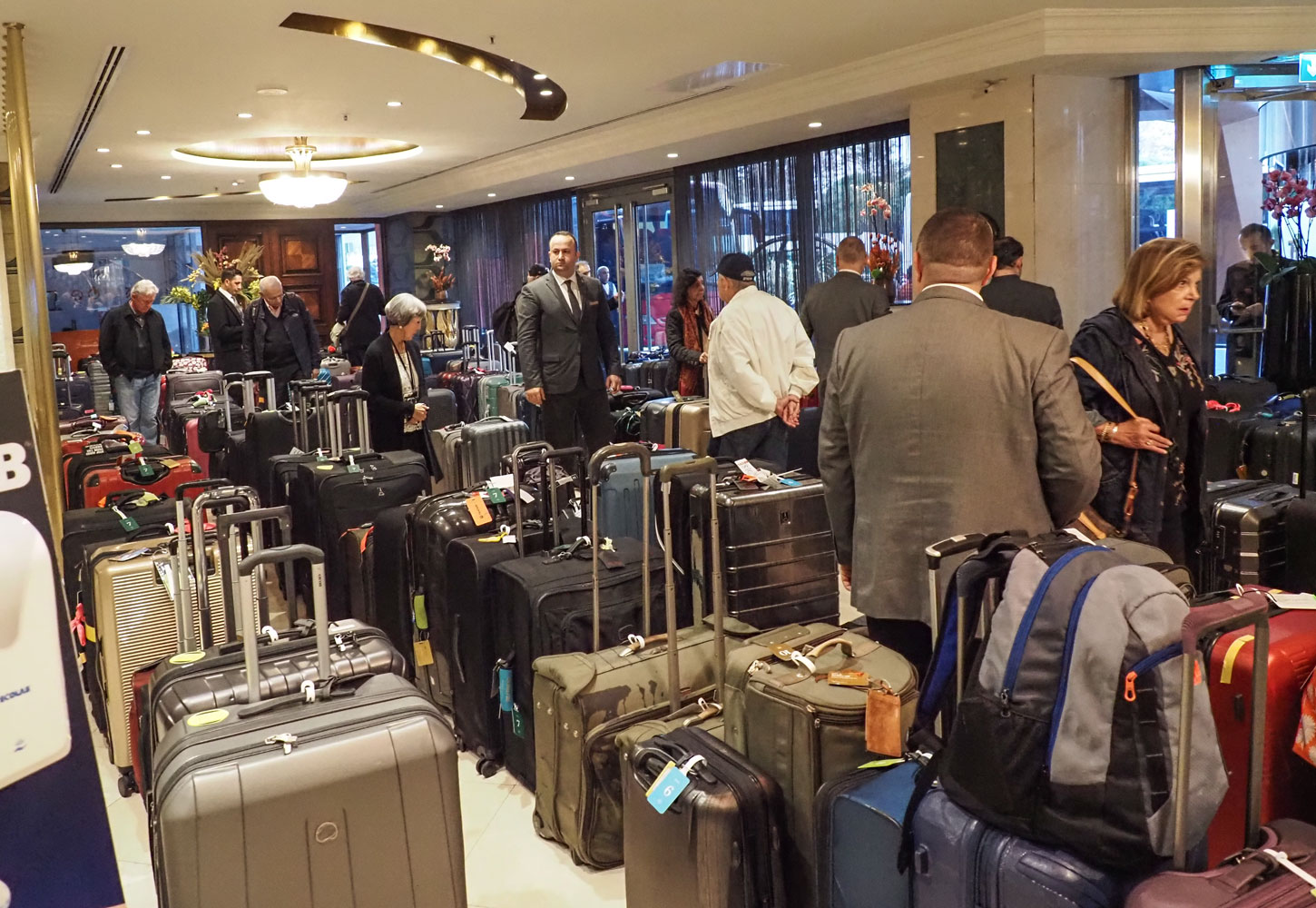
We followed our bags as they were taken to the bus and loaded in the cargo area.

We began the day with a cruise on the Bosphorus. We met in the lobby at 8am and bused to the dock, where the boat was waiting for us.
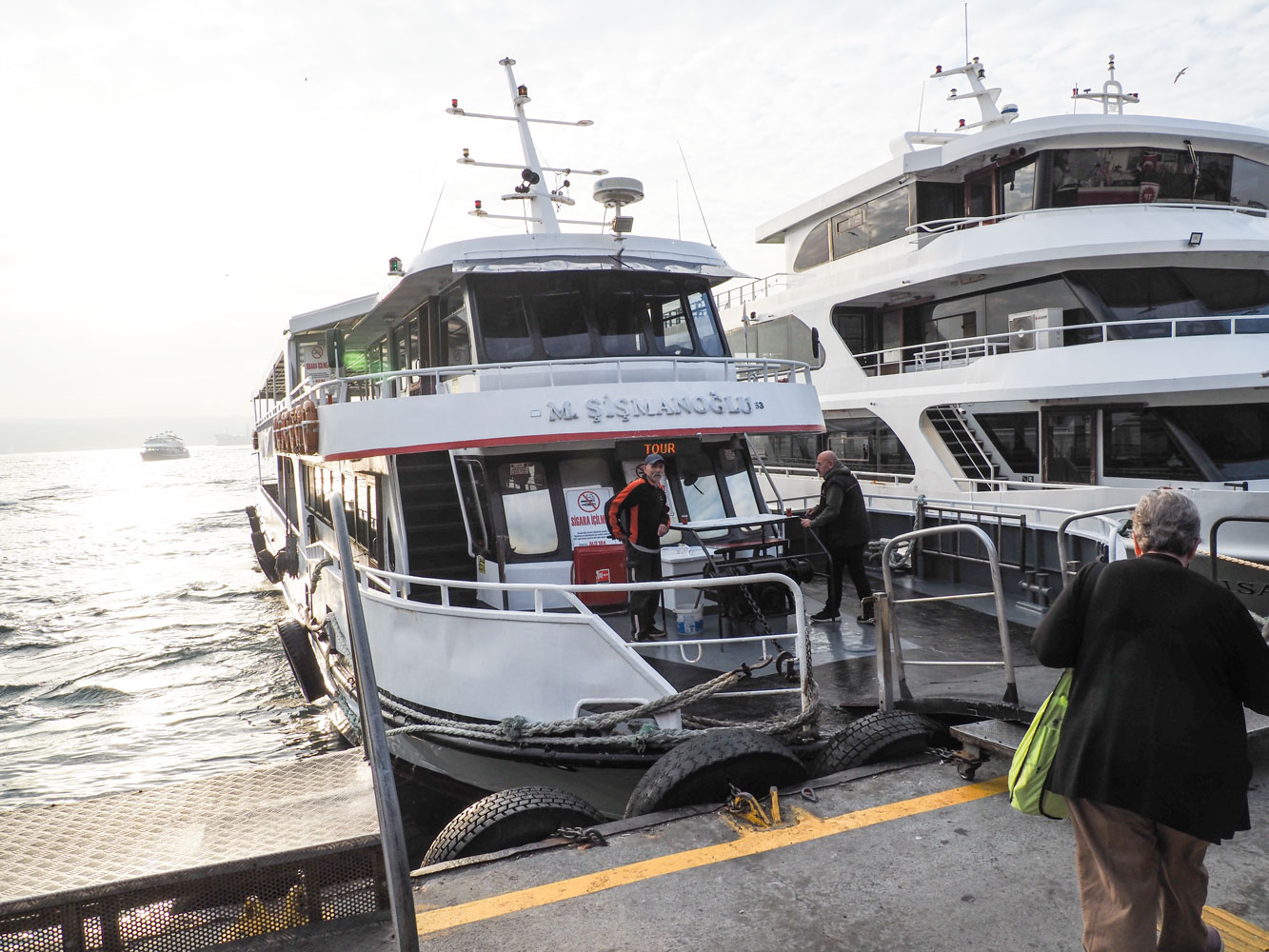
There are three bridges across the Bosphorus, all suspension bridges. The southern-most is the Bosphorus Bridge. The middle bridge is the Faith Sultan Mehmet Bridge, and the northern-most is the Yavuz Sultan Selim Bridge.
We sailed north along the European side of the Bosphorus to the second bridge, the Faith Sultan Mehmet Bridge, where we turned around and sailed back on the Asian side. I took pictures of some of the buildings on each side of the Bosphorus, but I don't know what they are, or their names. I'll include a few pictures of ones that seemed interesting.
Here's a two-minaret mosque. I asked one of our guides why some mosques have more than one minaret, when all they need is one for the muezzin to call the faithful to prayer (Salah). He said that multiple minarets are sometimes used as an architectural element, for example, to balance the design by having one minaret at each corner of the mosque, and sometimes it's just to show off the wealth of the person financing the building of the mosque.

A sports stadium, maybe soccer.
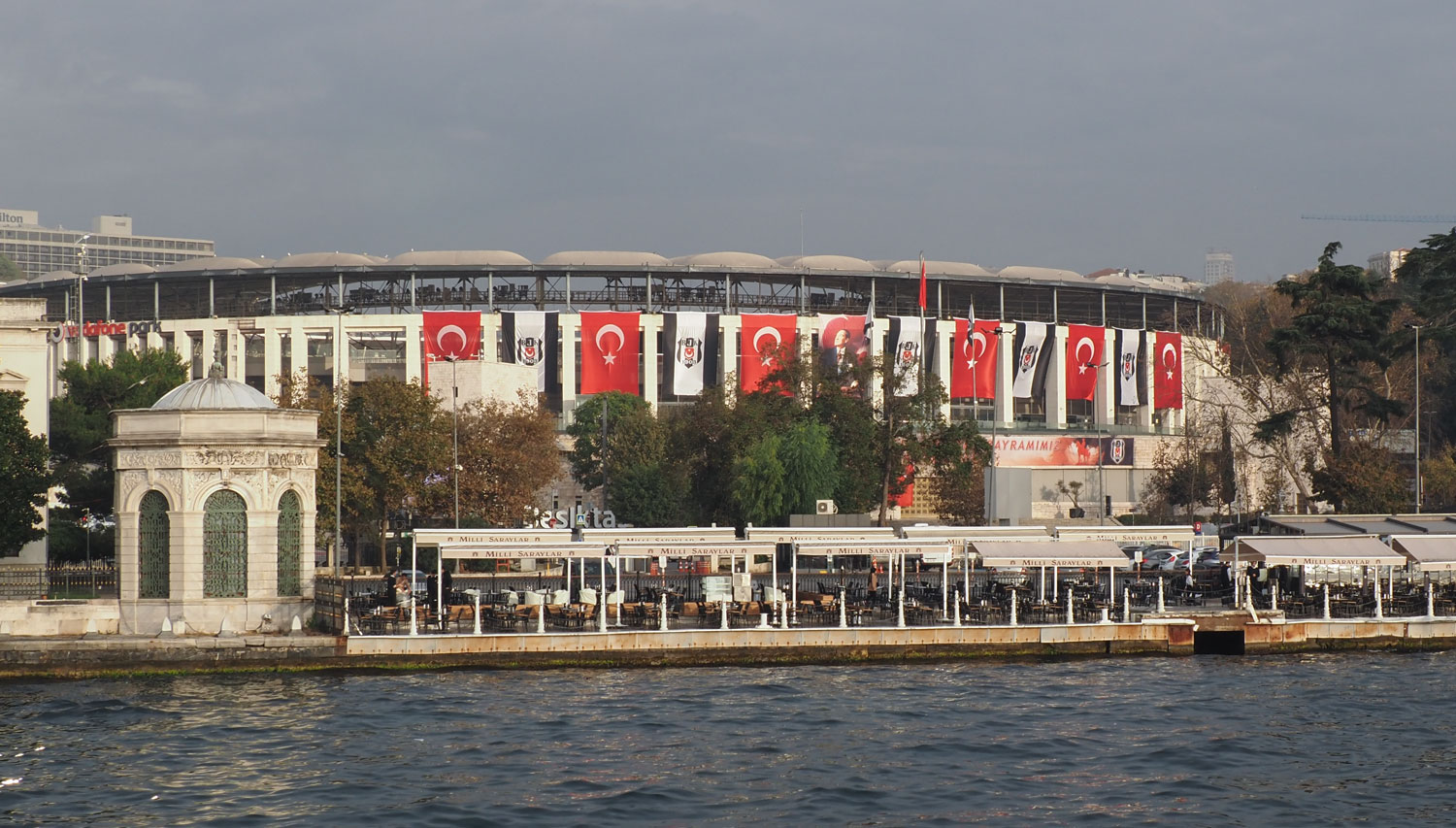
I was told this is a government building. It's big.

A yacht club?
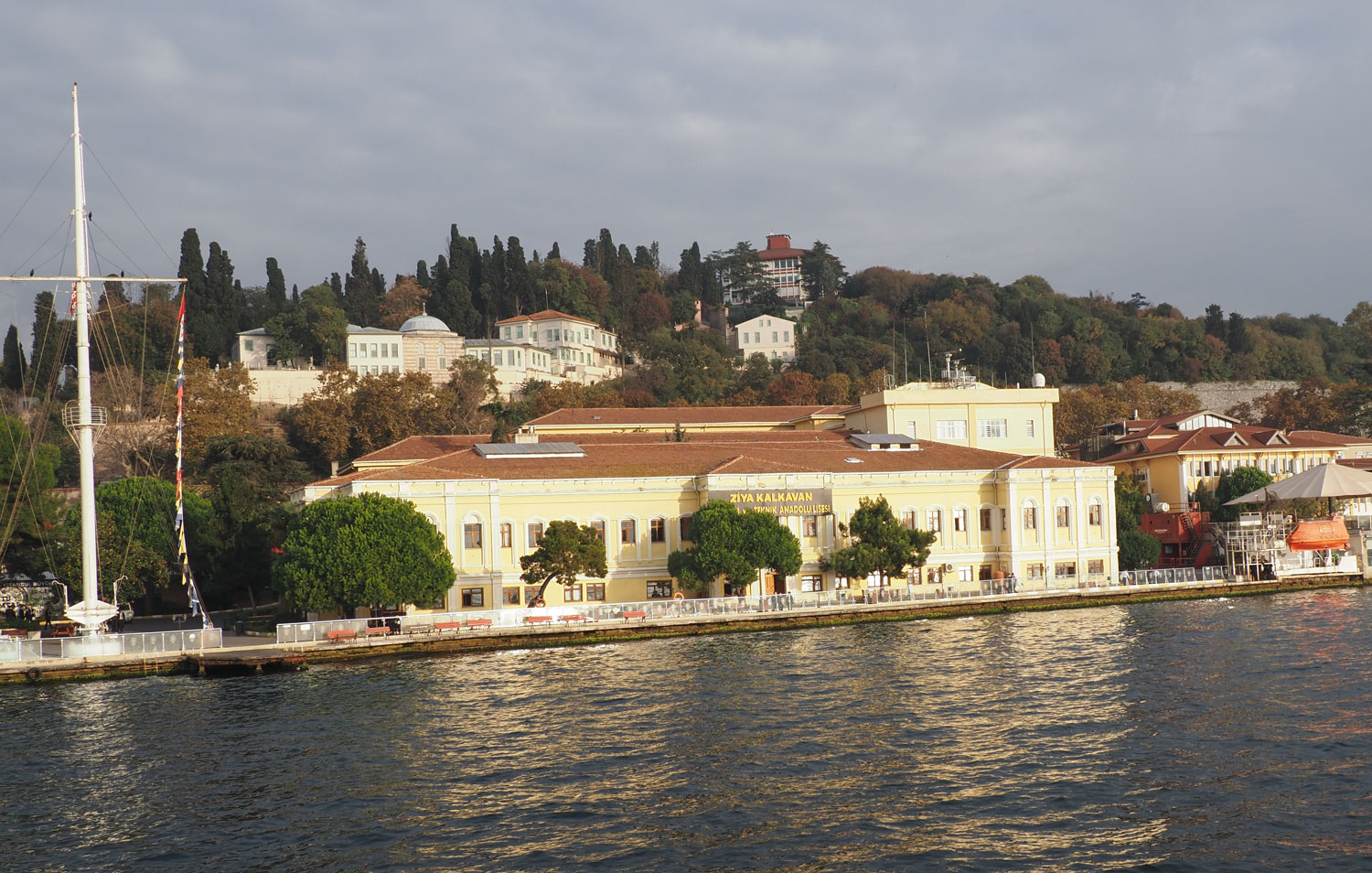
An interesting two-minaret mosque near the Bosphorus Bridge.
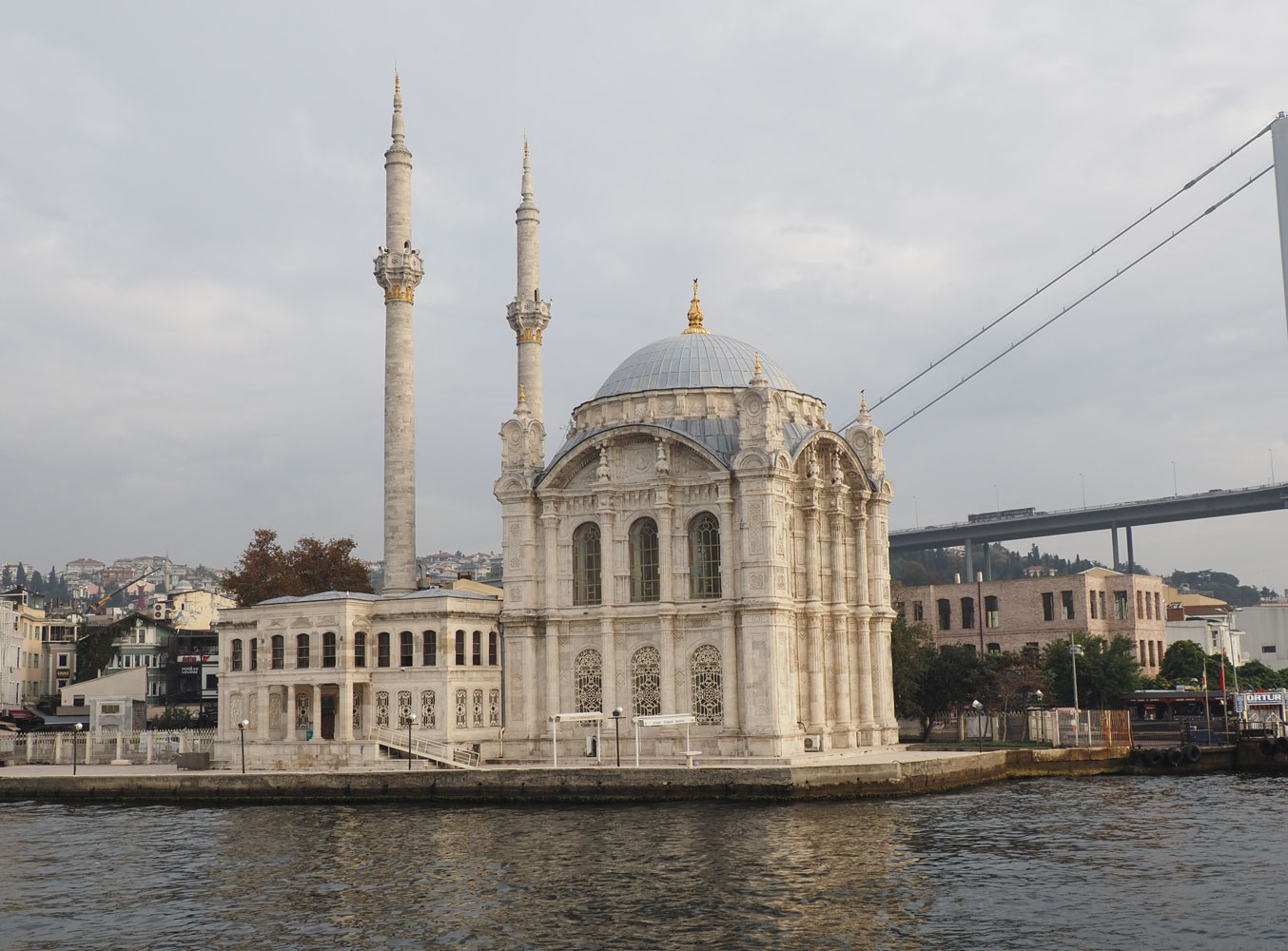
The Rumelian Fortress (also known as Rumelihisarı) undergoing restoration.

Arriving at the second bridge, the Faith Sultan Mehmet Bridge, we turned around and headed back on the Asian side of the strait. We had been sitting on the top (open) deck, but now we were heading into the wind and it was fairly cold. We went down to the lower, enclosed deck and I didn't take a lot more pictures.
Here's another two-minaret mosque. There are mosques all over Istanbul. You wonder how they manage to keep them up because with that many mosques, there can't be enough people attending to contribute enough money to maintain them. Perhaps they get money from the government.

Eventually, we arrived at the dock and boarded the bus for our drive to the Rüstem Pasha Mosque, located in the same area as the spice market we visited yesterday.
It's an unusual mosque, requiring entrance up a stairway.
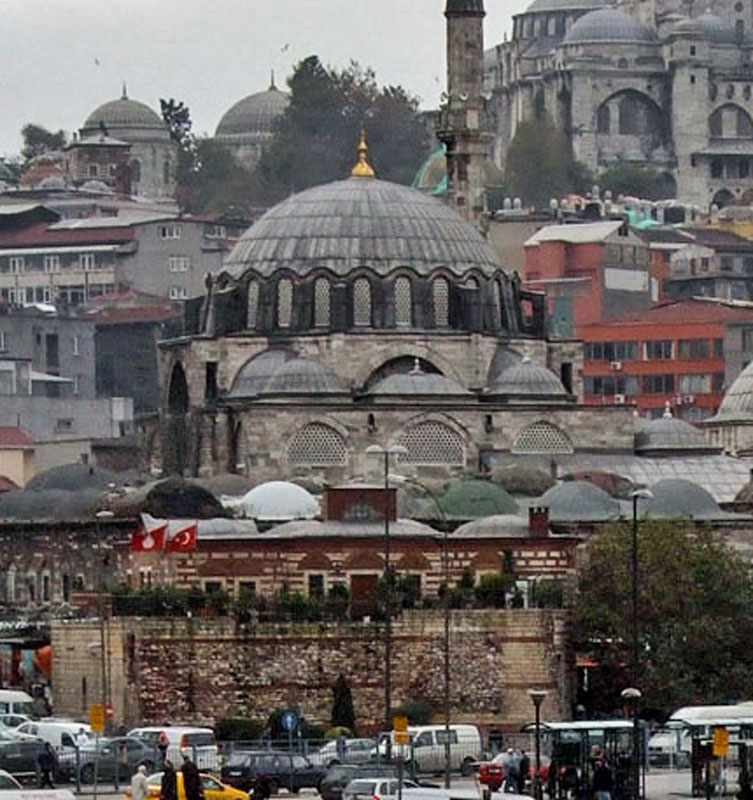
It was built about 1563 and has some beautiful blue tile work. It's in much better condition than the Hagia Sophia.
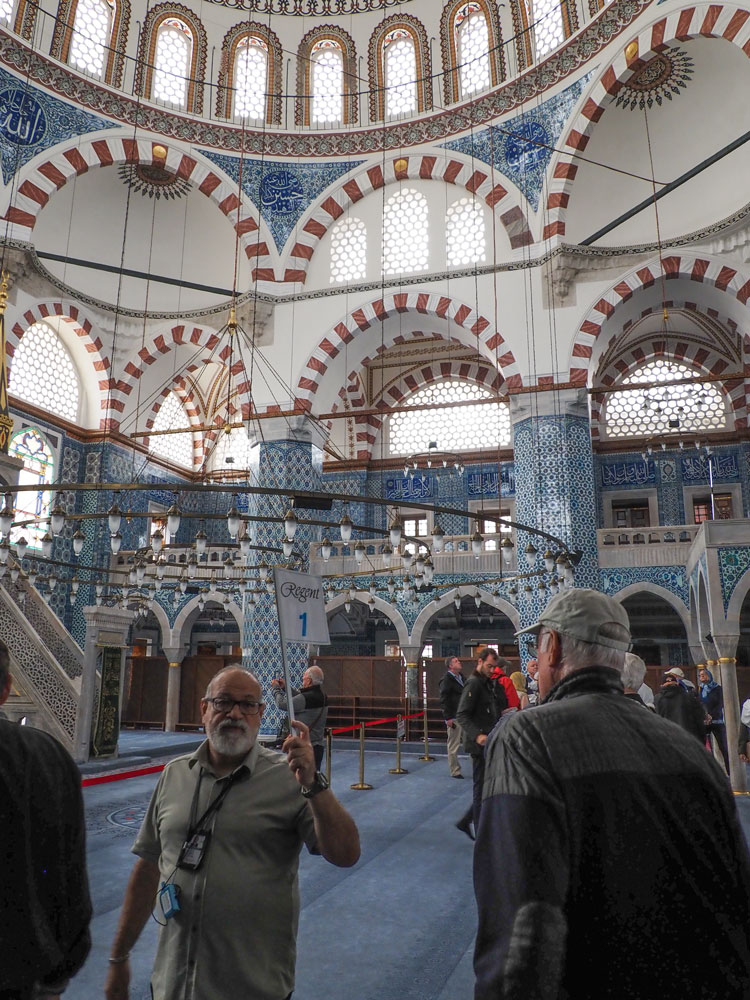
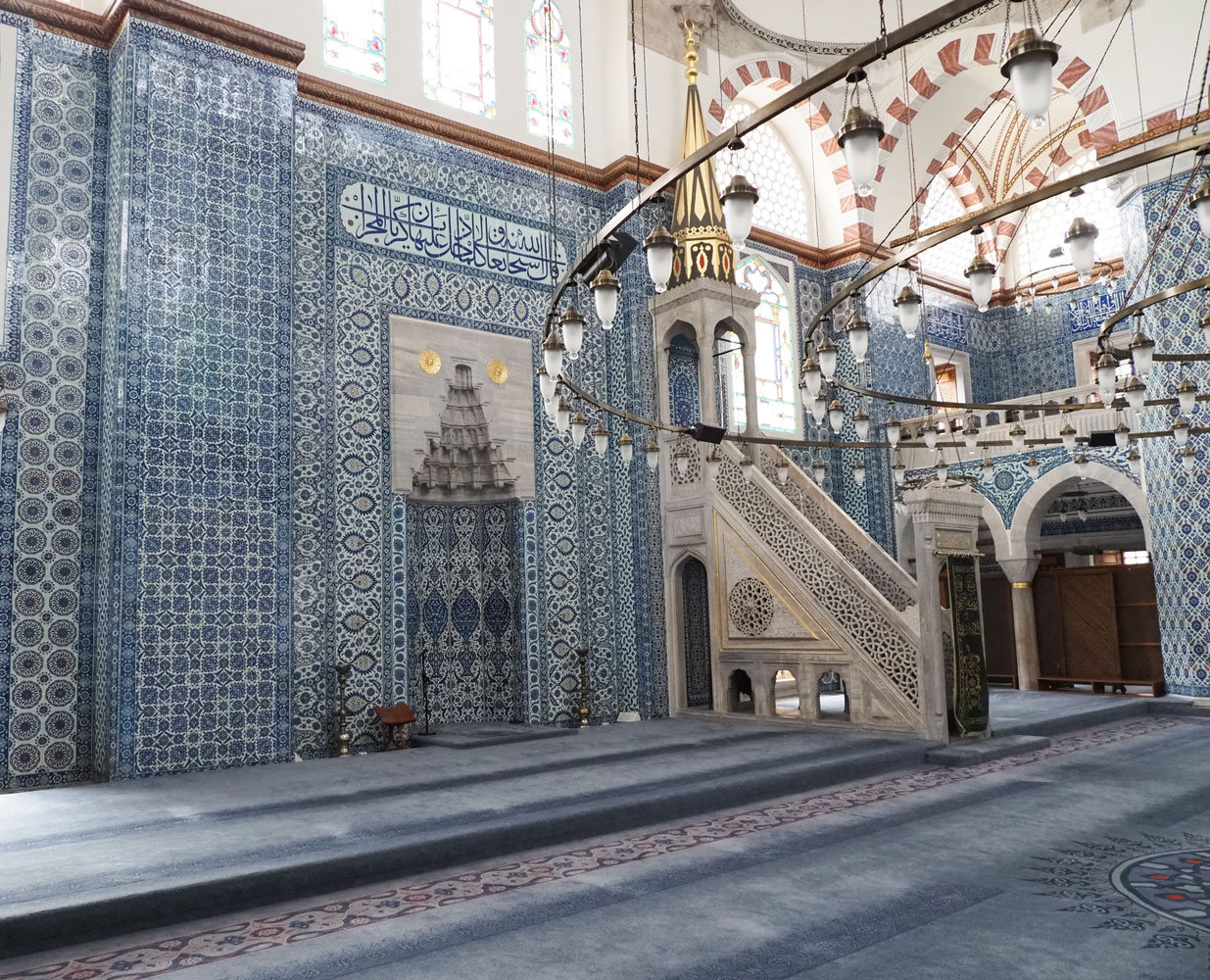
A closer view of the Mihrab.

This picture shows how much blue tile work there is in the mosque. There is a theory that the tile work in this mosque was a practice project for the building of the Blue Mosque, which we had not been able to see because of renovation. I was just as happy to see this small example, which is really beautiful.
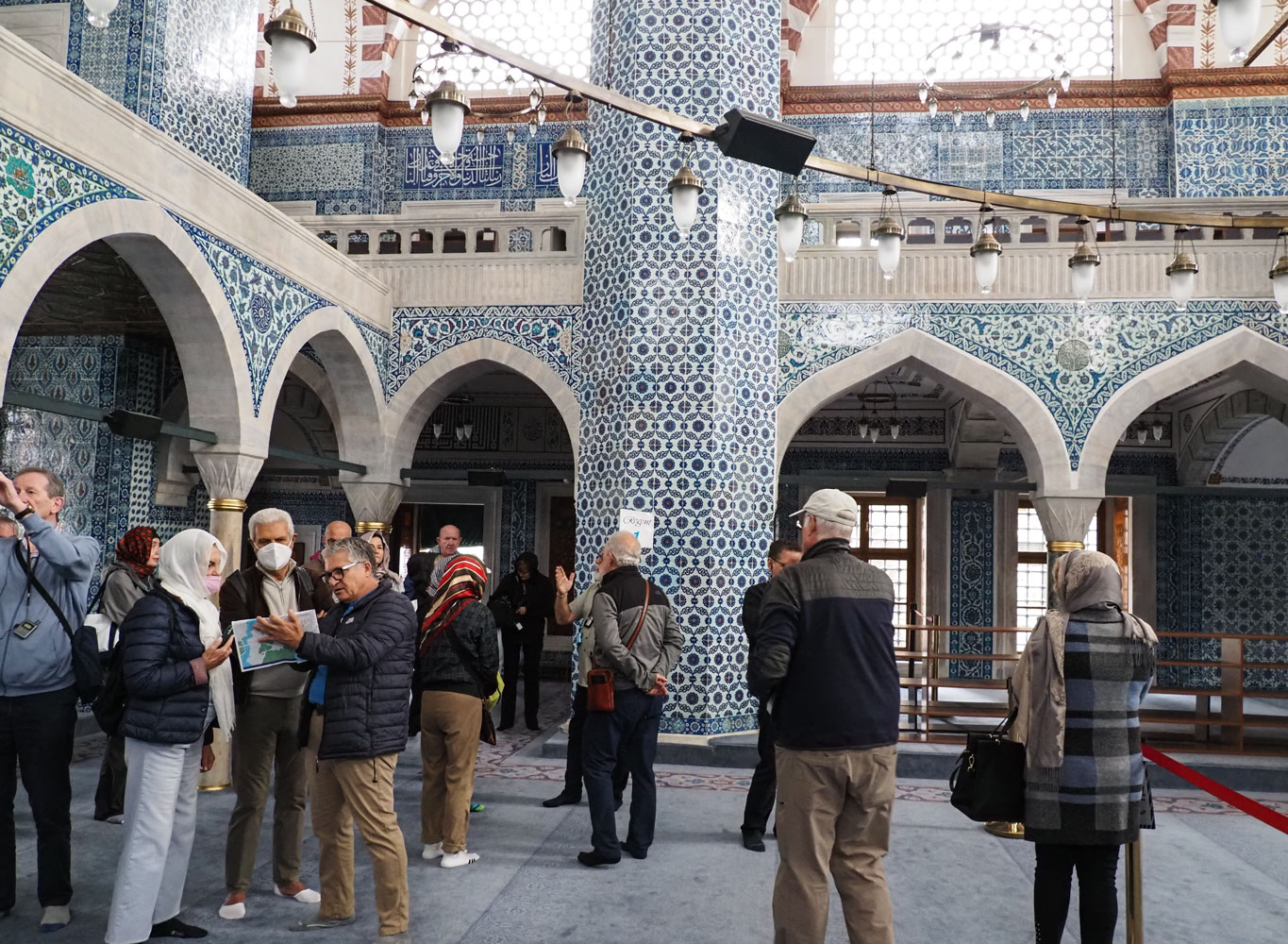
The dome ceiling.

I was pretty impressed by this mosque, and I took many more pictures. But I have to limit how many I put in this blog.
We left the mosque and then did something that's very touristy for Istanbul - we went to a rug merchant.
There's a ceremony in a rug merchant visit. You're always offered something to drink, and it's impolite to refuse. Then the rug merchant tells you about himself and his business, and about how honest he is and how high quality his rugs are.
Then he has his helpers start spreading out rugs for you. Almost always, they start with the expensive rugs and work down in price. After a short while, there will be a pile of rugs on the floor. If you buy, a bit of negotiation is expected.

Judy and I bought a wool rug. The wool in this rug has not been dyed. They get three natural colors of wool - white, brown and black (there are sheep that have brown wool, and sheep with black wool).
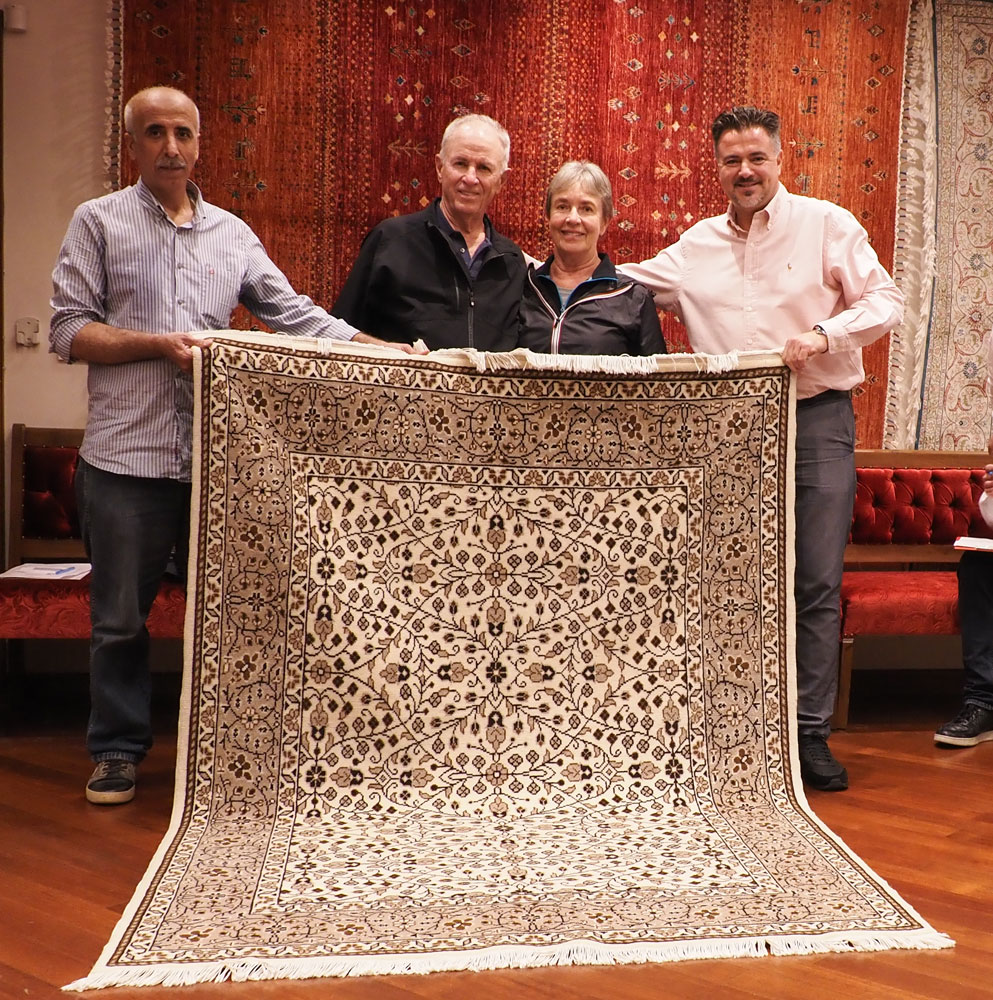
They wrap the rug and ship it to your home. All shipping and customs fees are included in the price of the rug. I'll update this page after we receive the rug to let you know how it goes - how long it took and the condition of the rug when we receive it.
[Update: We received the rug fairly soon after we got home and it was in excellent condition.]
After this, we went to see a weaver working on a silk rug.

They offered us one of her rugs that she recently completed but we declined. It's a bit hard to see, but at the end of the arrow, just below the black border, towards the side she's holding, you'll see an oblong white element. Inside that element she has woven her signature, making it an artist-signed rug. It's a beautiful rug, but it's too small to do much with, except maybe use it as a wall hanging. And as an artist-signed silk rug, it was expensive.
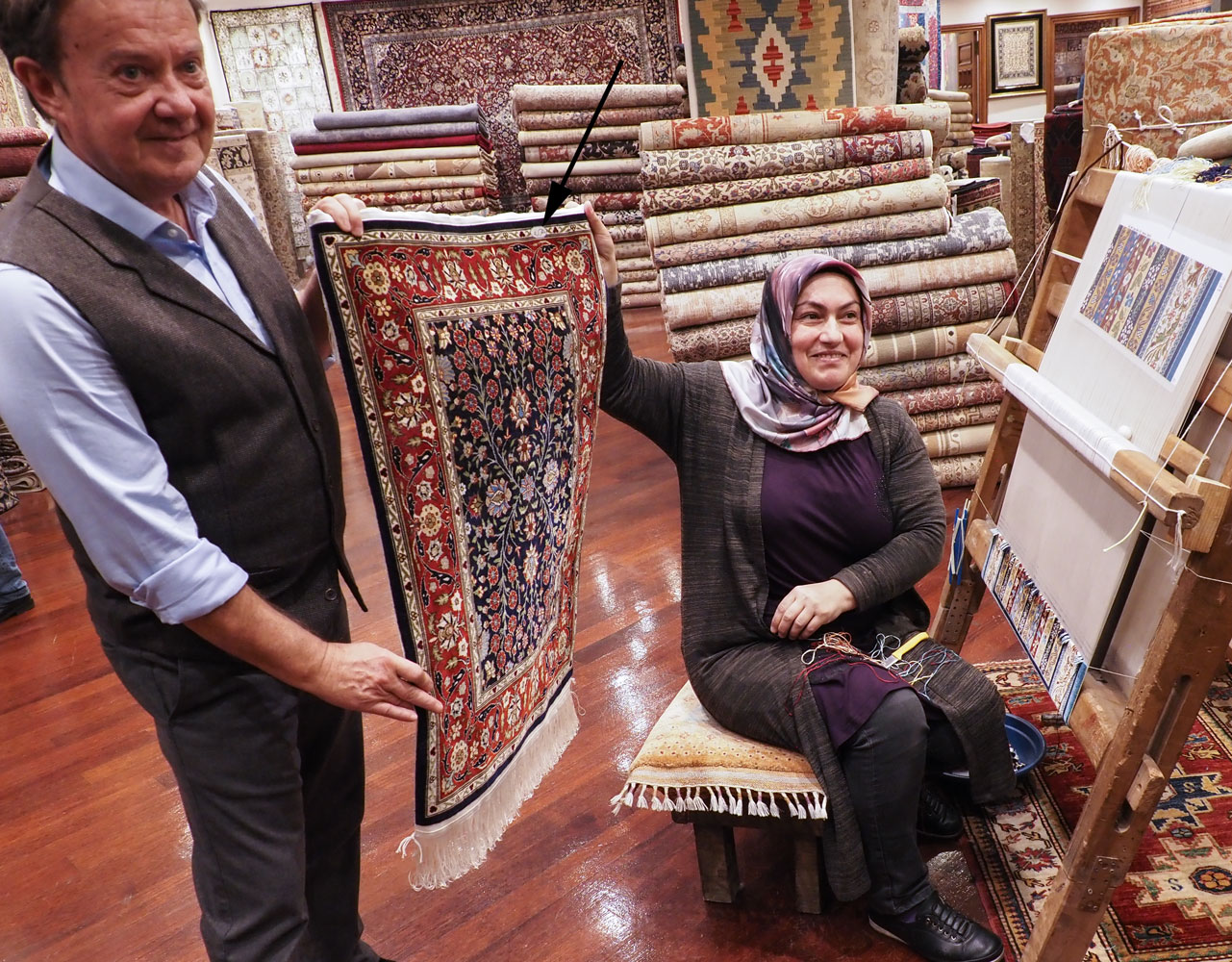
Then we went to lunch at a restaurant nearby. I got so involved in talking with other guests that I didn't take any pictures of the inside of the restaurant. But they proved that Turkish food can be quite good. I've always believed that good food is universal. But it has to be good, and this restaurant prepared very good Turkish food.
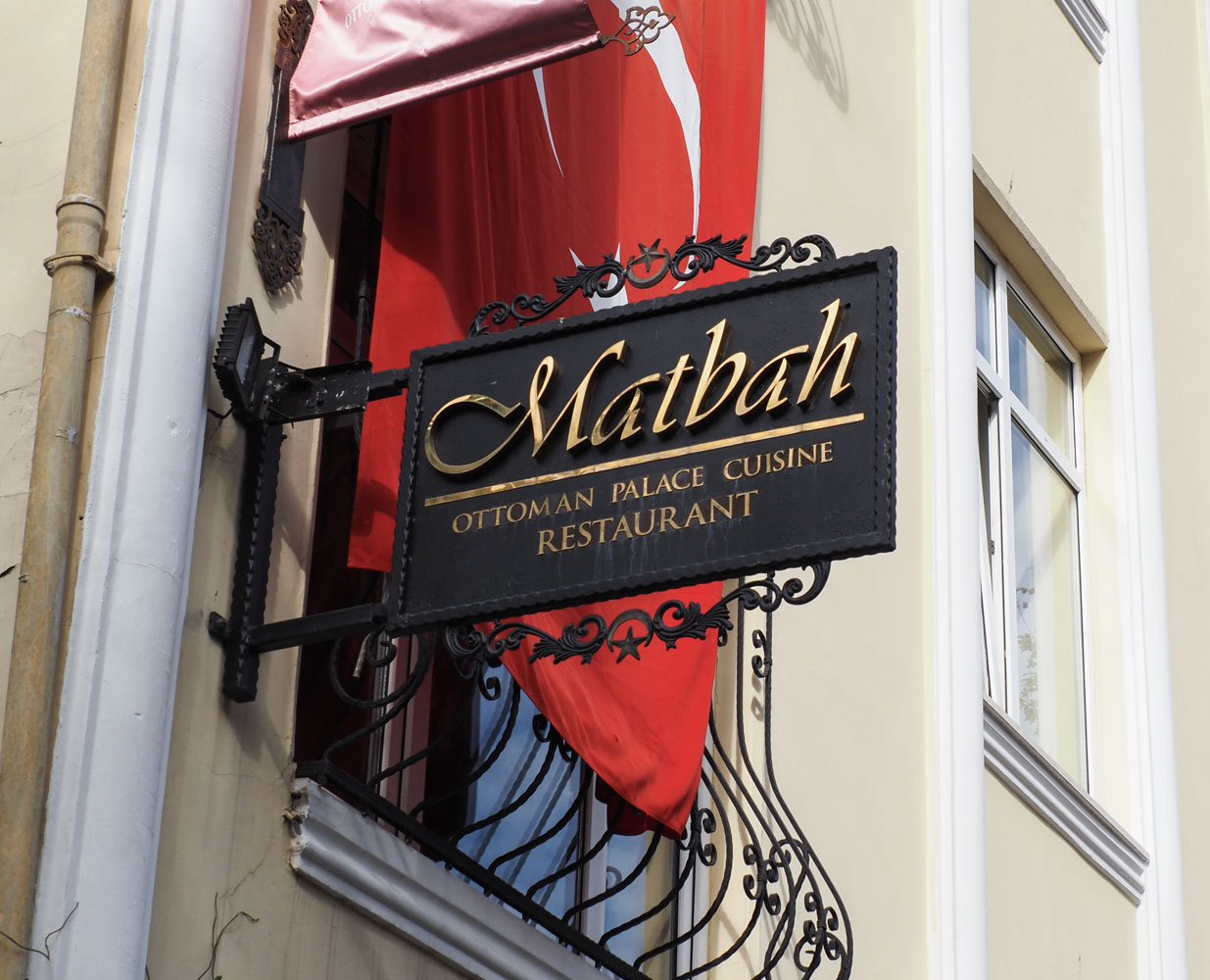
After lunch we went to the Archeological Museum.

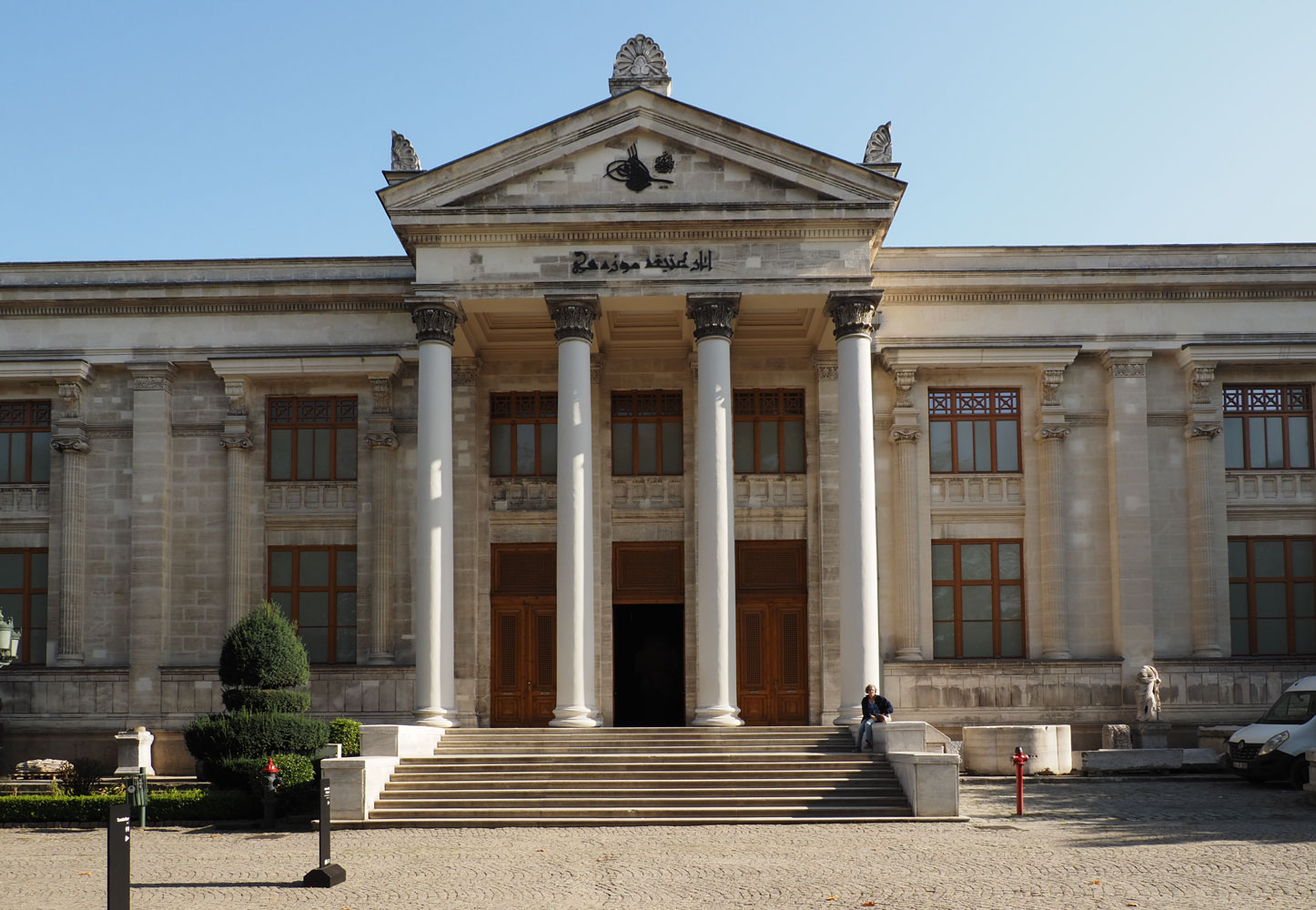
Here's a vase on display. It looks Greek to me.
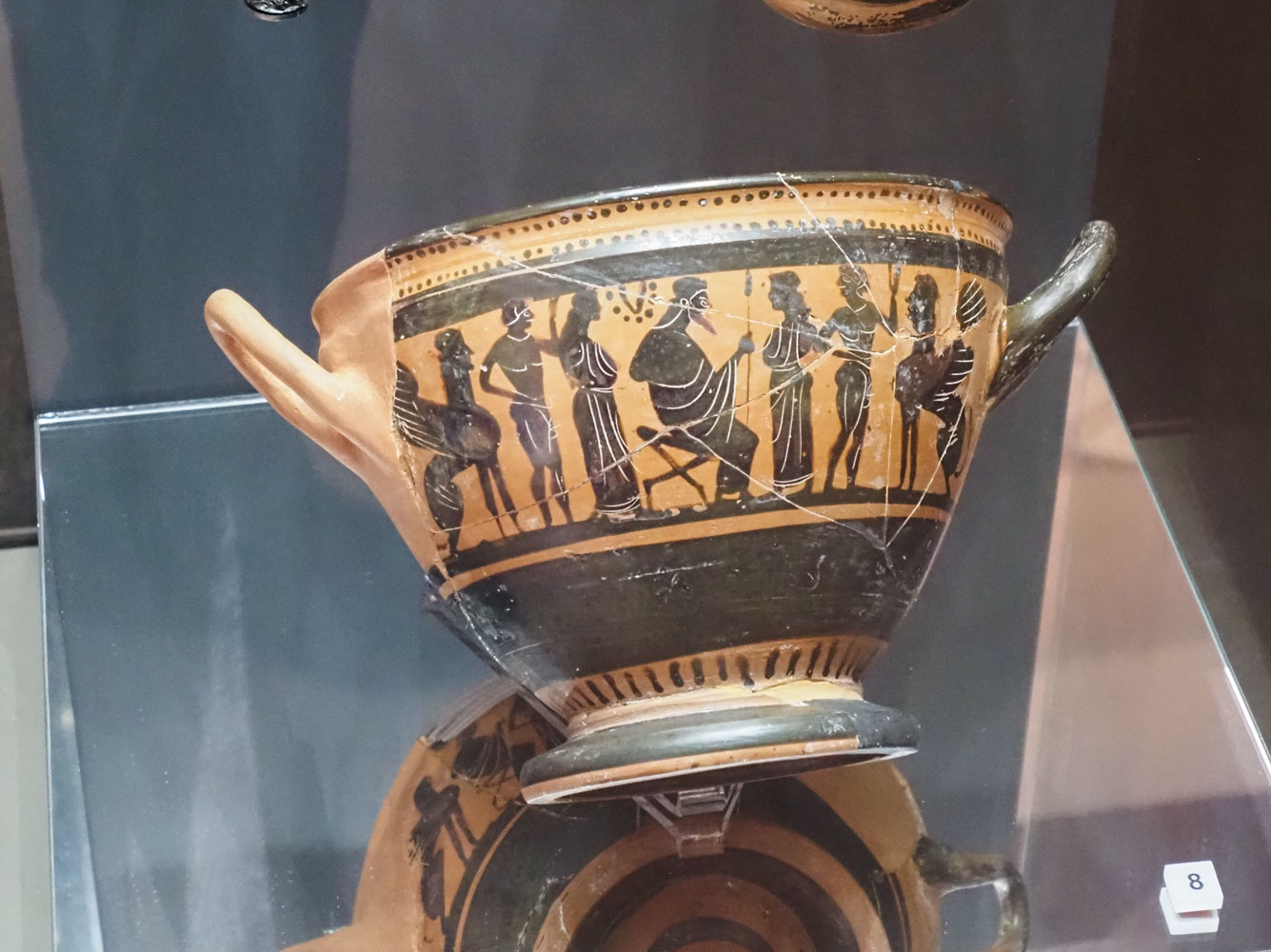
A horse's head.

Jet lag was catching up with us, making the museum less enticing than resting on a bench outside. When the group visit was over, we boarded the bus for our trip to the ship.
We entered a large underground parking area for the buses. They unloaded our luggage and we identified our bags to make sure everything was there.
Then we had to go through health screening. We filled out a form to indicate that we were not sick and had not been exposed to Covid in the past 10 (or so) days. We also had to show our vaccination cards.

Then we went to a station where we dropped off our luggage. We put tags on our luggage with our room numbers. They will deliver our luggage to our rooms.
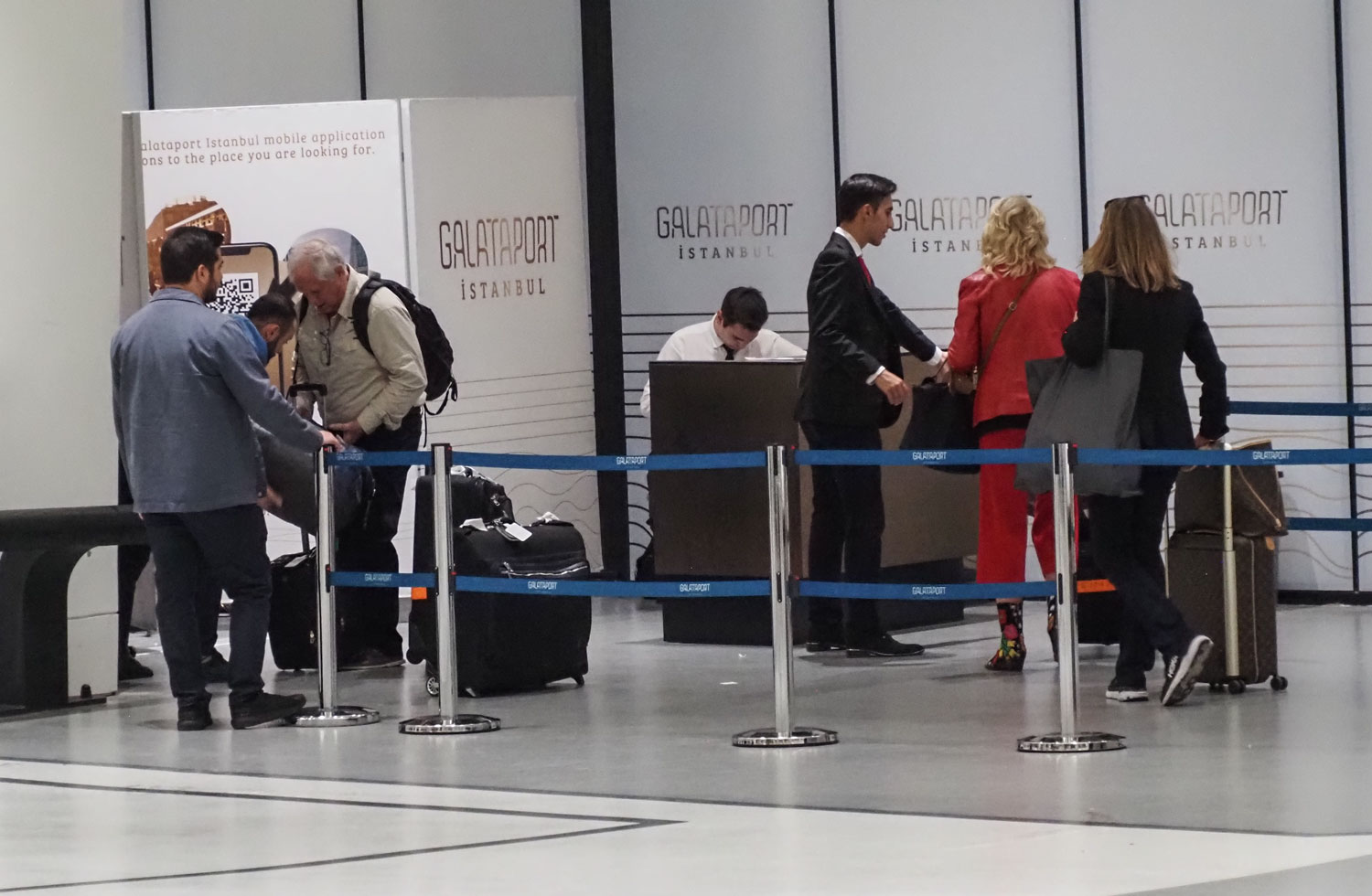
Next, we had to go through screening for our carry-on luggage.
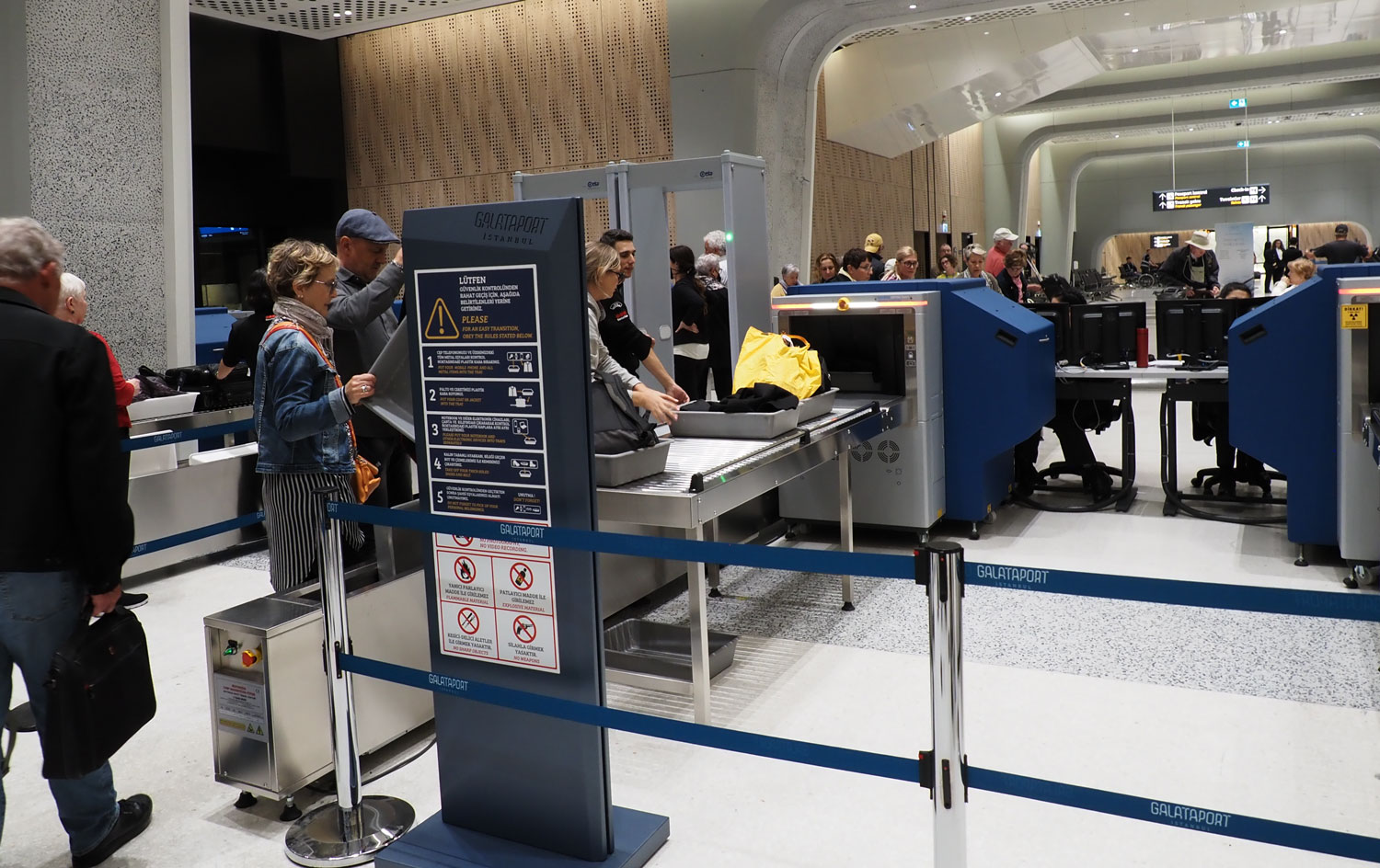
Finally, we went to the Regent station, turned in our passports, picked up our room keys, and boarded the ship. According to the front desk, there are 695 guest on board.
Our room on the Explorer is similar to the one we had on the Splendor, back in July.

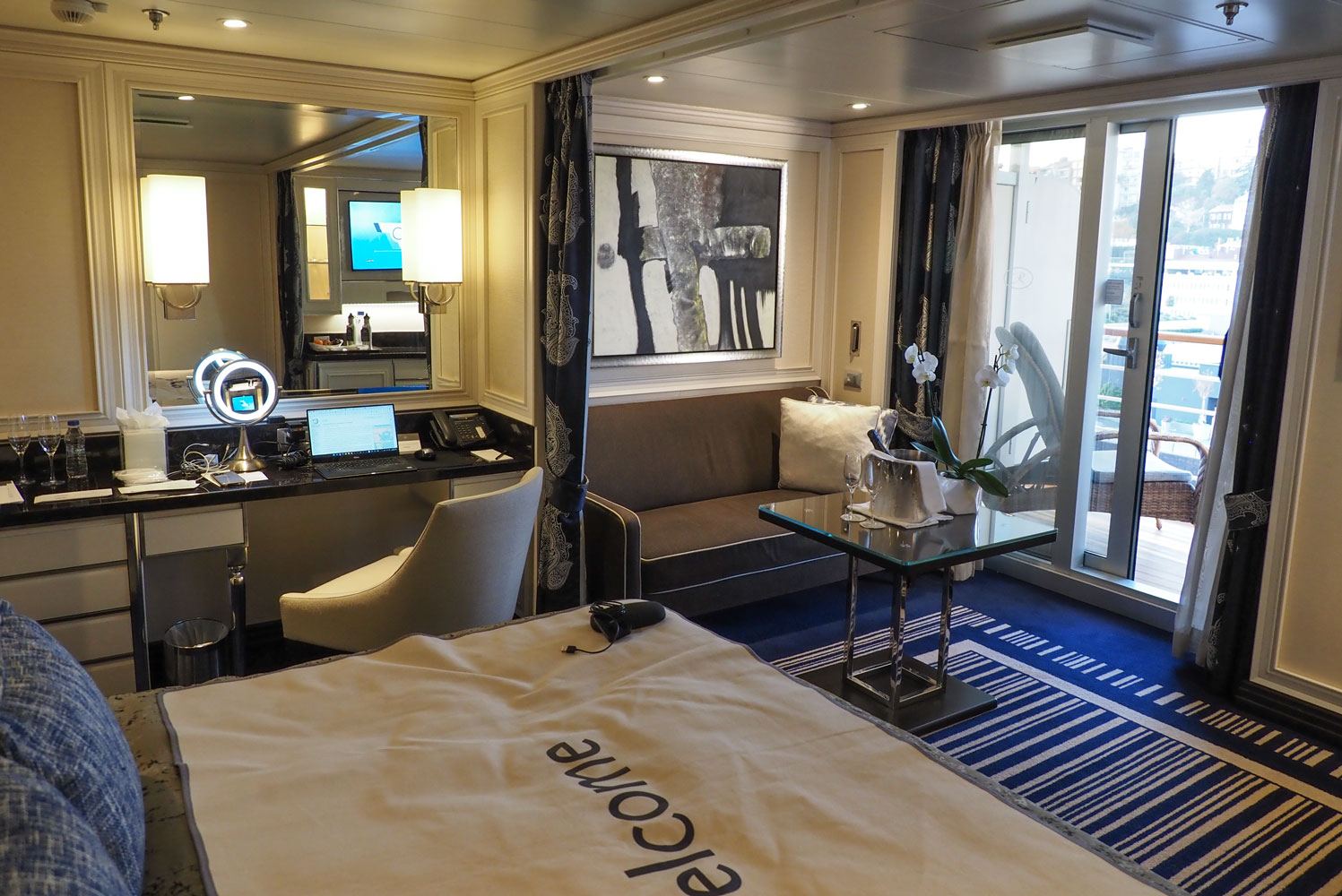
The room has a large bath, with two sinks. It also has a tub and a separate shower. We don't use the tub, but we really appreciate the stand-alone shower.

Our cabin attendant, Andrea, came by to introduce herself and to see if there was anything we needed.
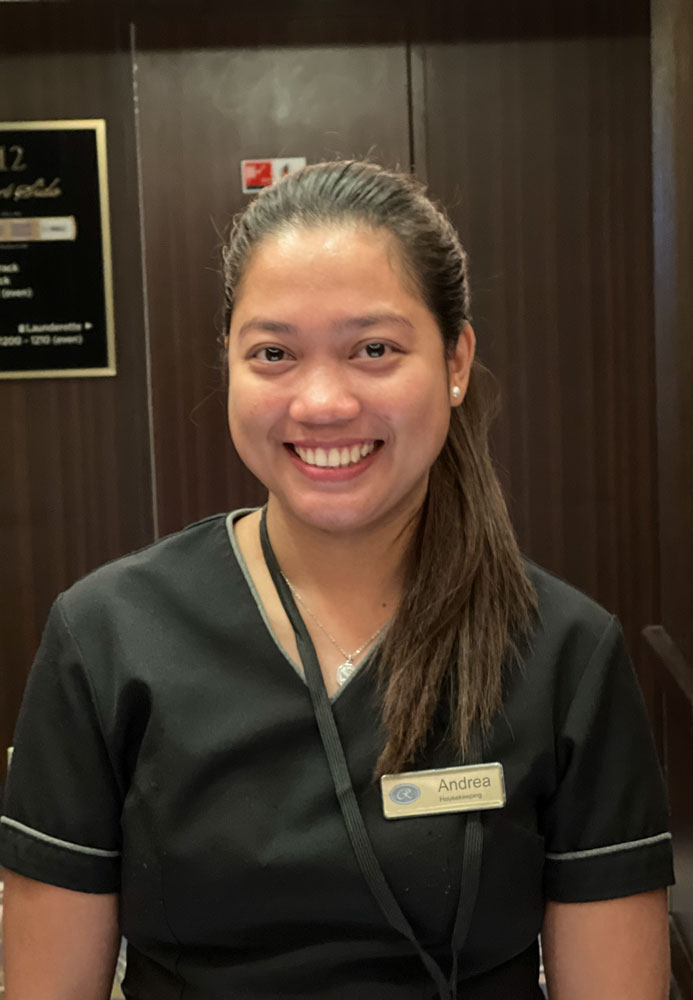
Soon it was time for the sail-away party, and we went down to deck 11. Tim and Maria, who we had met earlier, were there and we chatted a bit with them as the ship moved away from the dock.

As we sailed away from Istanbul, the Bosphorus Bridge was lit up and a tug (in the foreground) was standing by to help, if needed.

We had a light dinner and then returned to the cabin to unpack a few things and collapse into bed.
+++++++++++++++++++++++++++++++++++++++++++++
11/1/2022 (Tuesday) We arrived at Dikili this morning about 10am. We have an excursion to the Pergamom Acropolis and Asclepeion this morning. Dikili is a tender port so the crew had a couple of tenders in the water shortly after we anchored.
Pergamon, in its heyday, was a rich Greek city. It is the northernmost of the seven churches of Asia cited in the Book of Revelation.
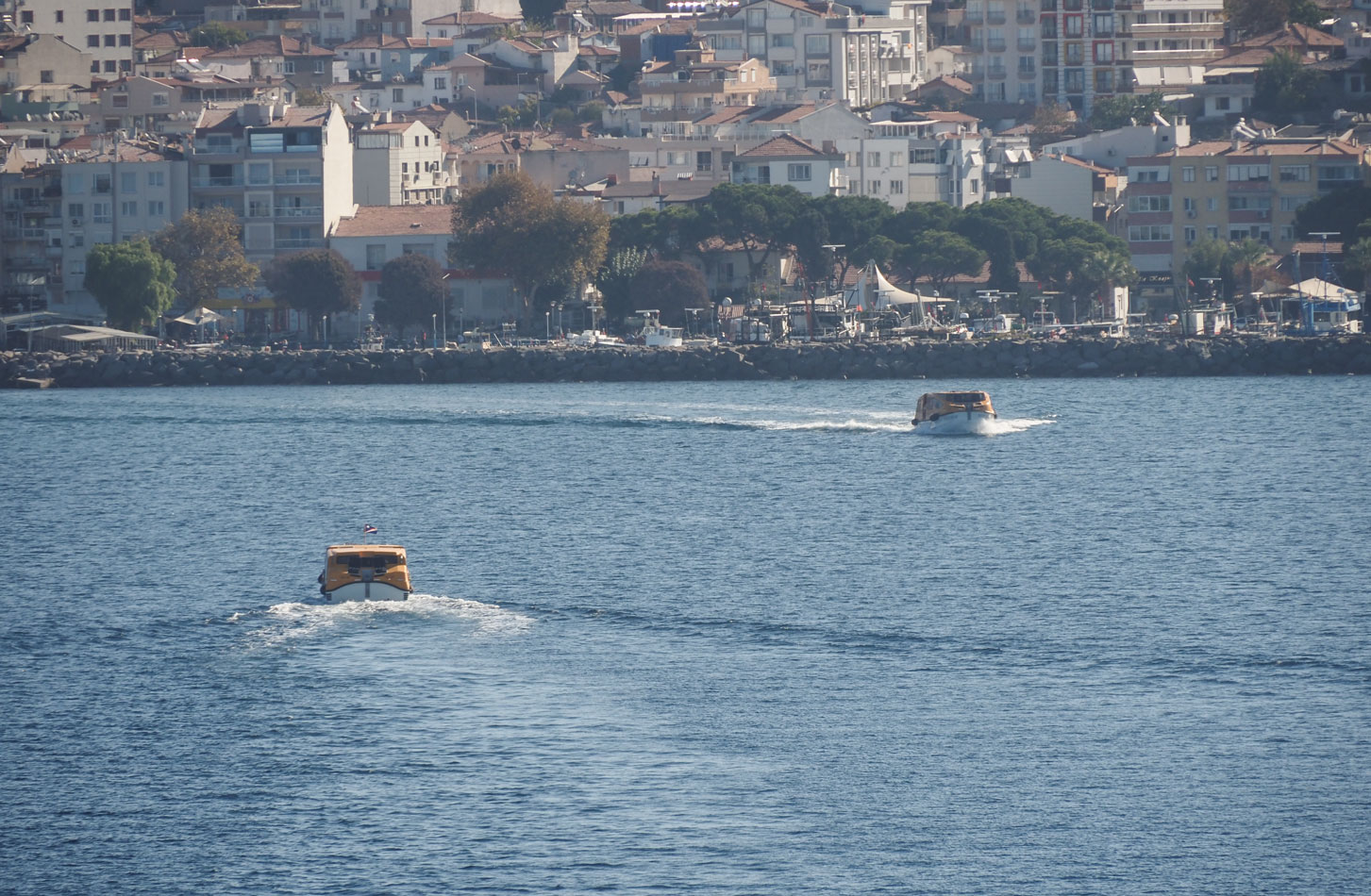
A bit after noon, we tendered in and bused to Pergamum. This empty tender is returning to the ship.
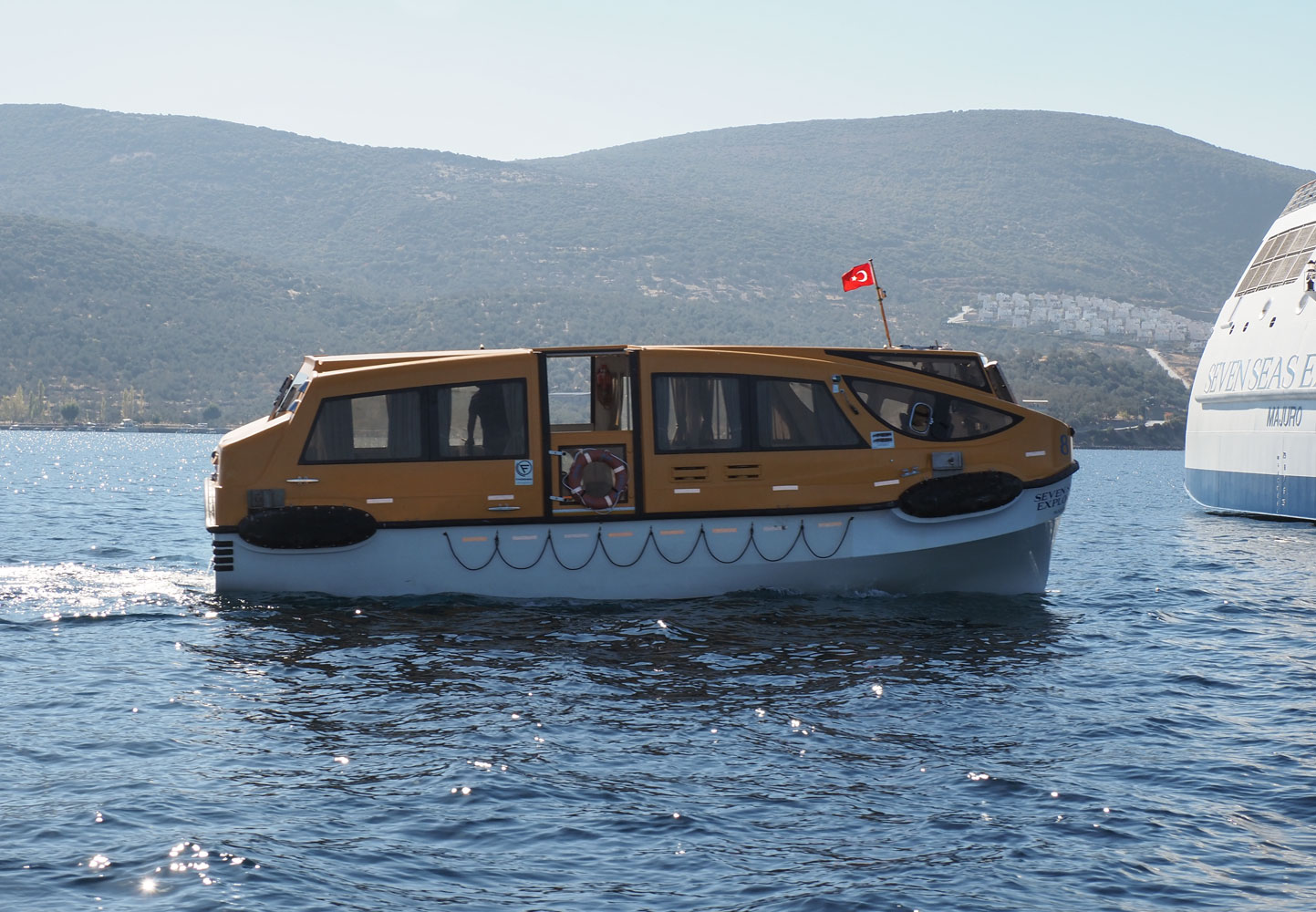
The ruins of Pergamum are situated on a hill, about 1,000 feet up.

They've installed a cable car system to take tourists up to the ruins.
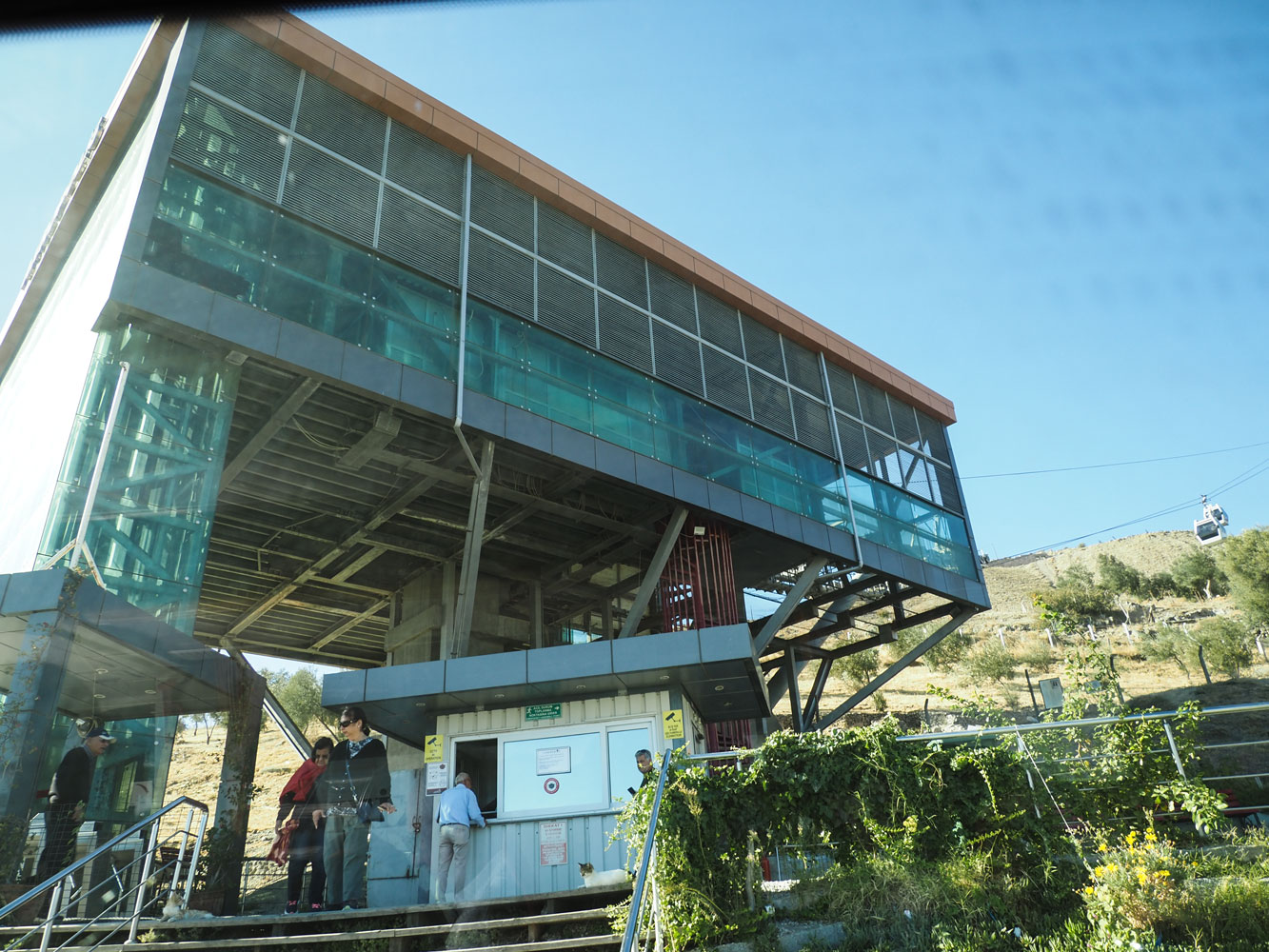
We rode the cable car up to the acropolis.

At the top of the cable lift, we were greeted by a number of shops. The entrance to the ruins is to the left in the picture, the small structure with the brown roof.

Once past the entry gate, it was an uphill walk to the main part of the ruins.
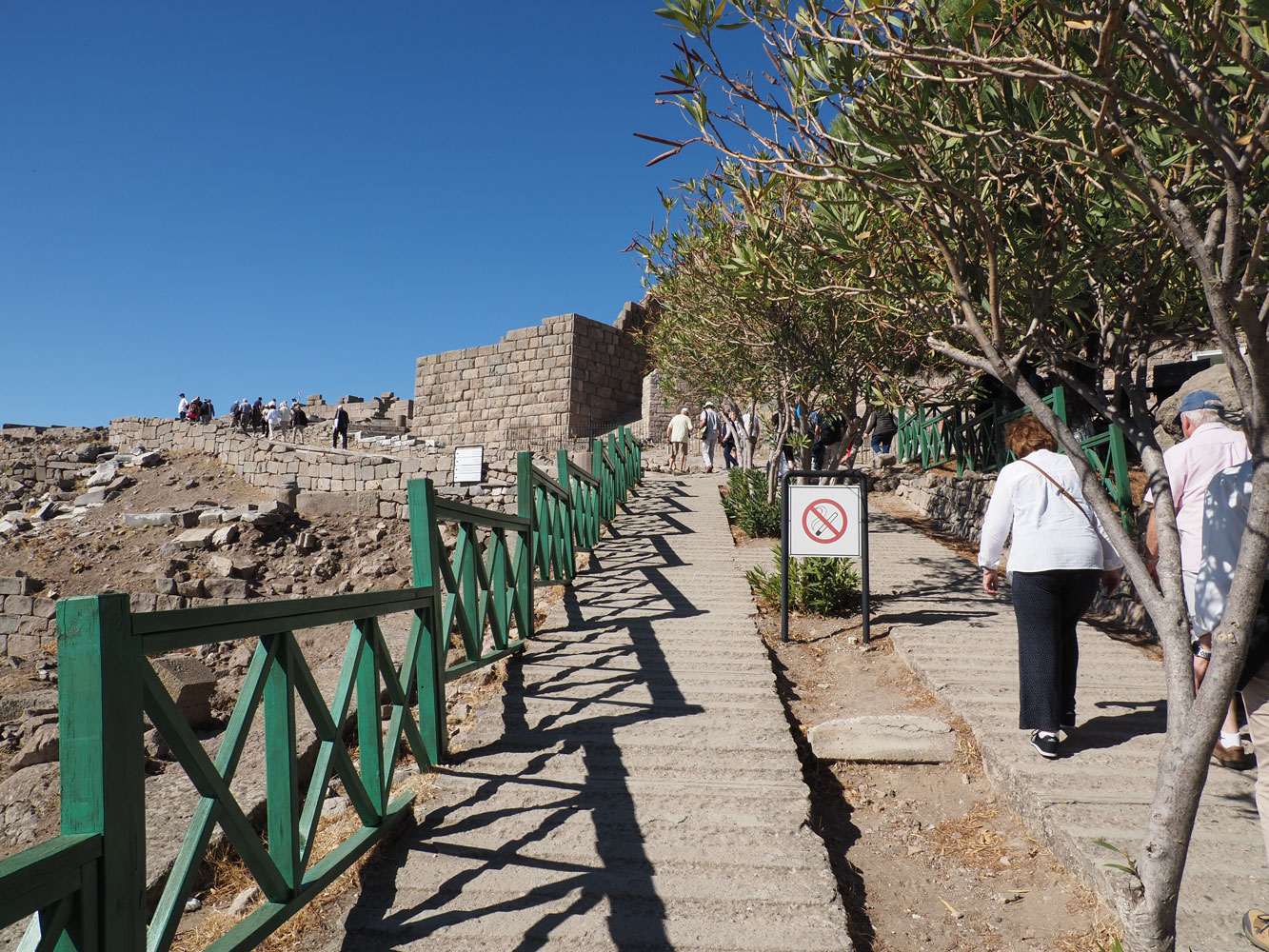
Here's a drawing of what Pergamum probably looked like in antiquity. The structure on the left is known as the Pergamum Altar. The pieces remaining in the 1800's were taken by German engineer, Carl Humann, to Berlin where it was reassembled. A museum, known as the Pergamon Museum, was built to house the reconstructed structure.
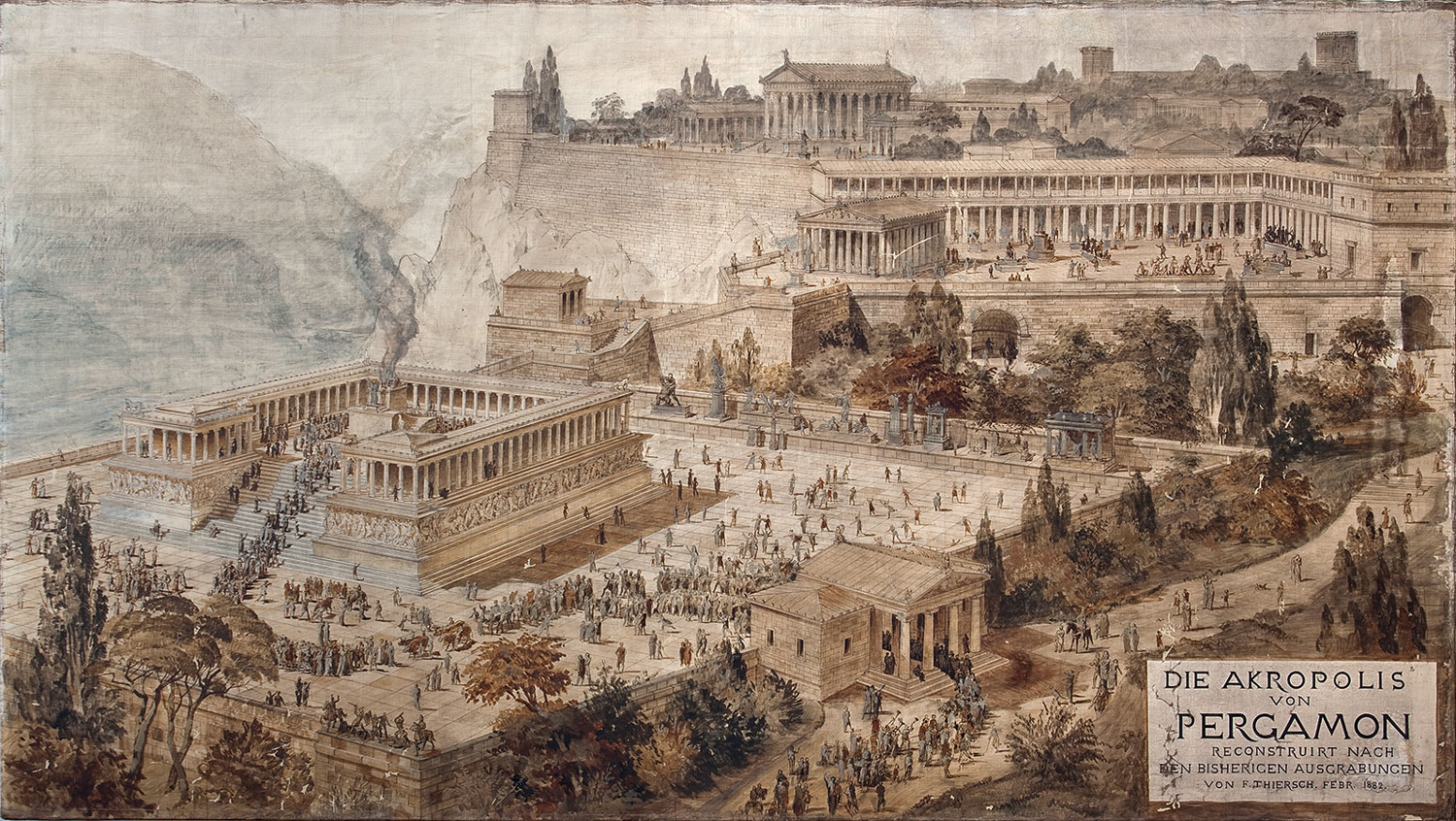
Here are a few pictures of the area.

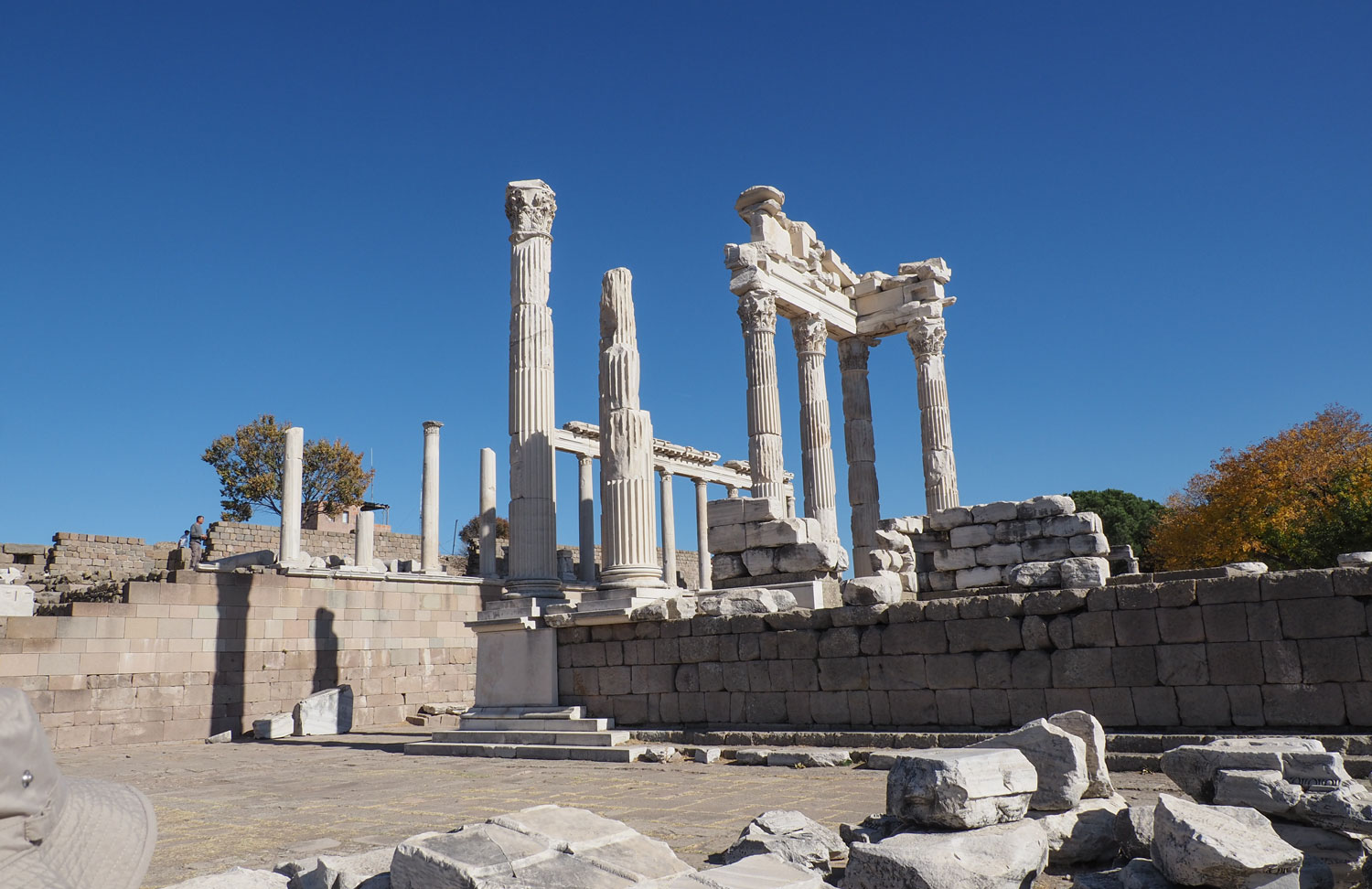
The theatre is well preserved and is the steepest of all ancient theatres. It could seat 10,000 people.
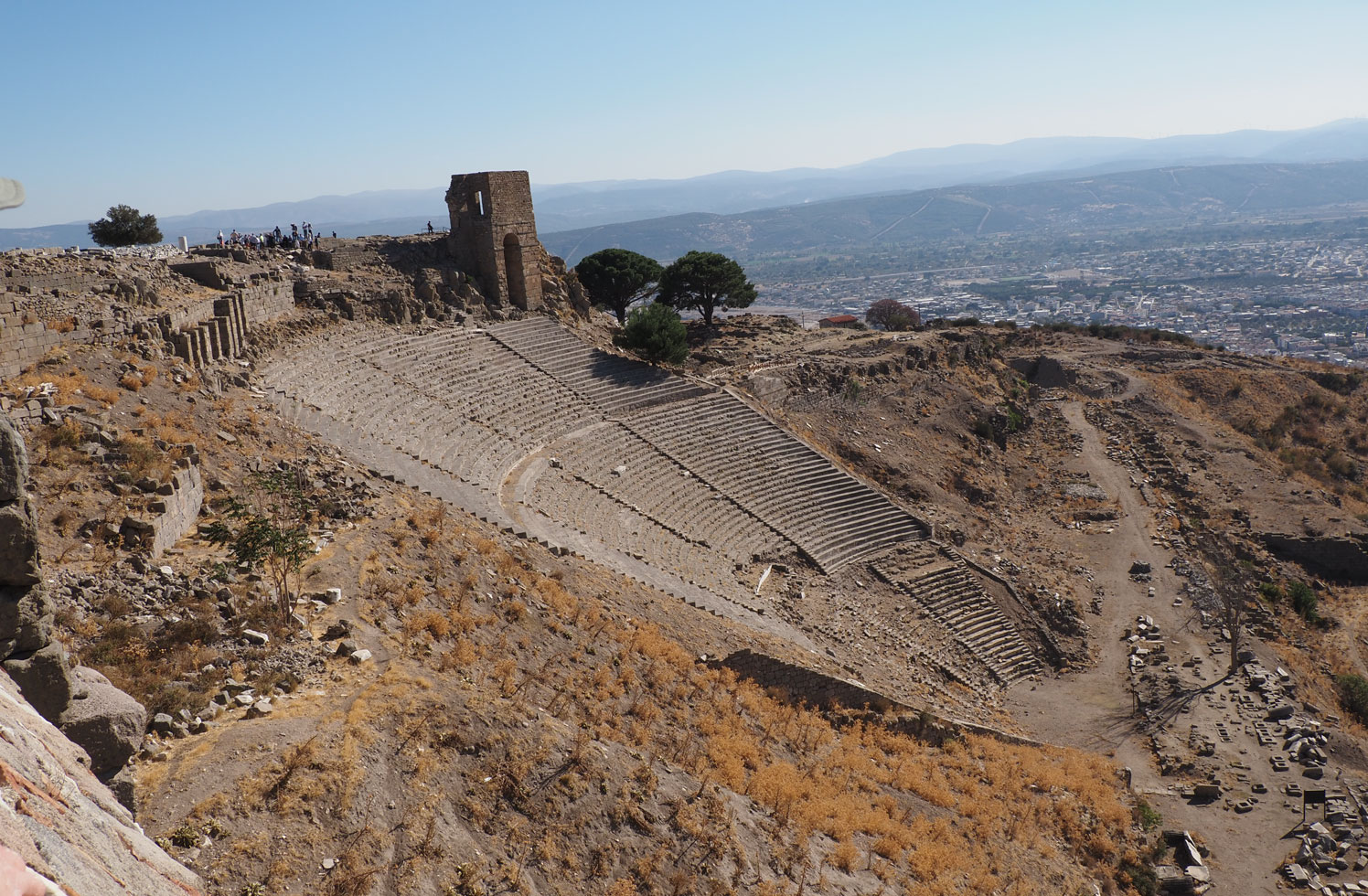
I don't know the purpose of this tunnel, perhaps to access storage rooms off of it.
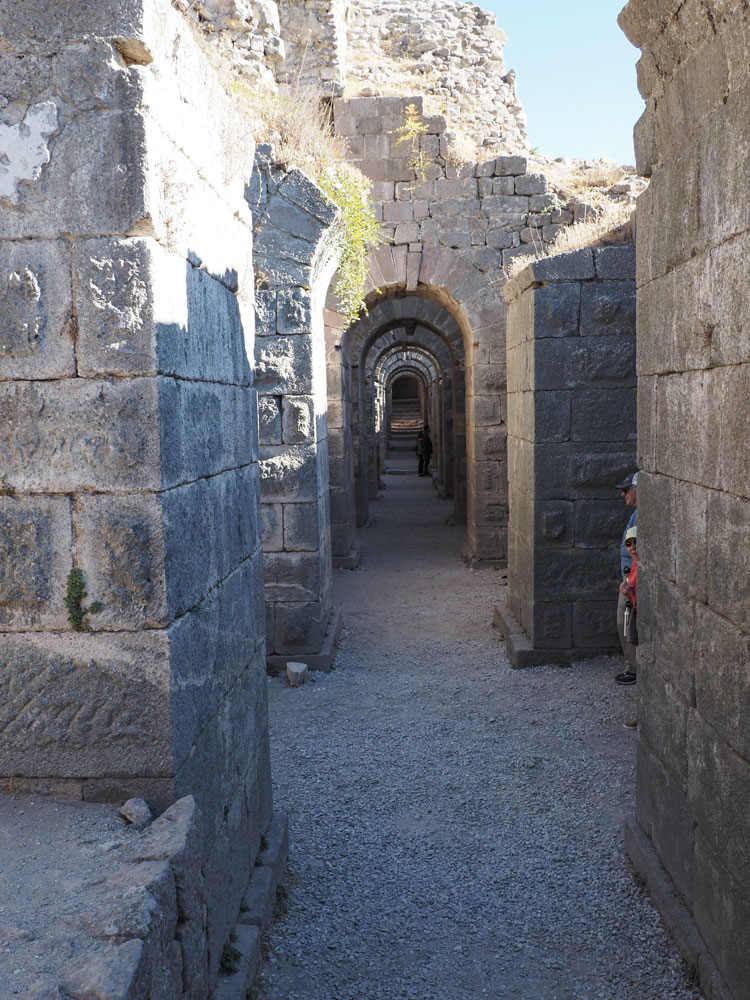
A picture of us in the tunnel area.

Some of the city walls.
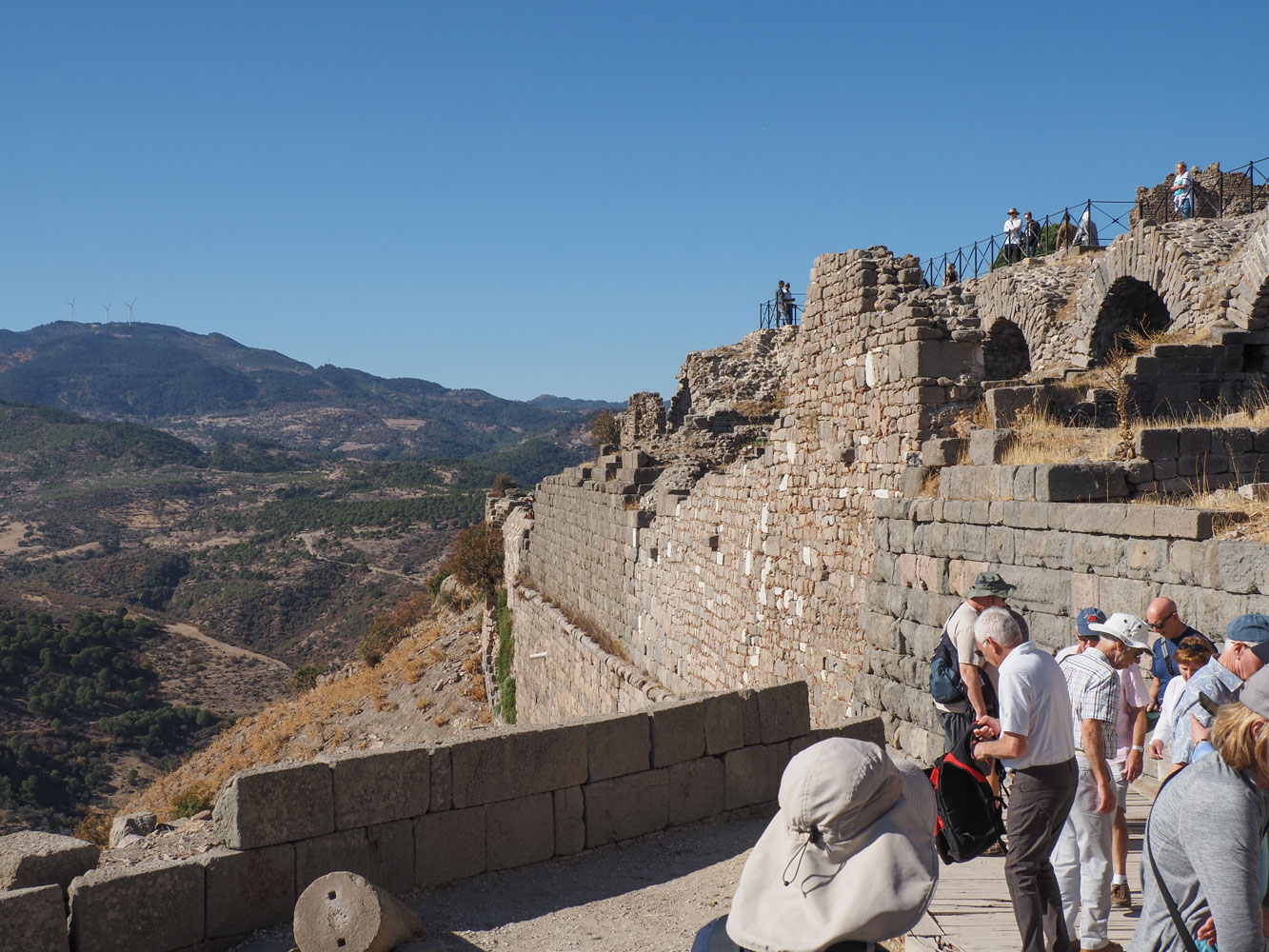
Looking back toward the city as we were departing.
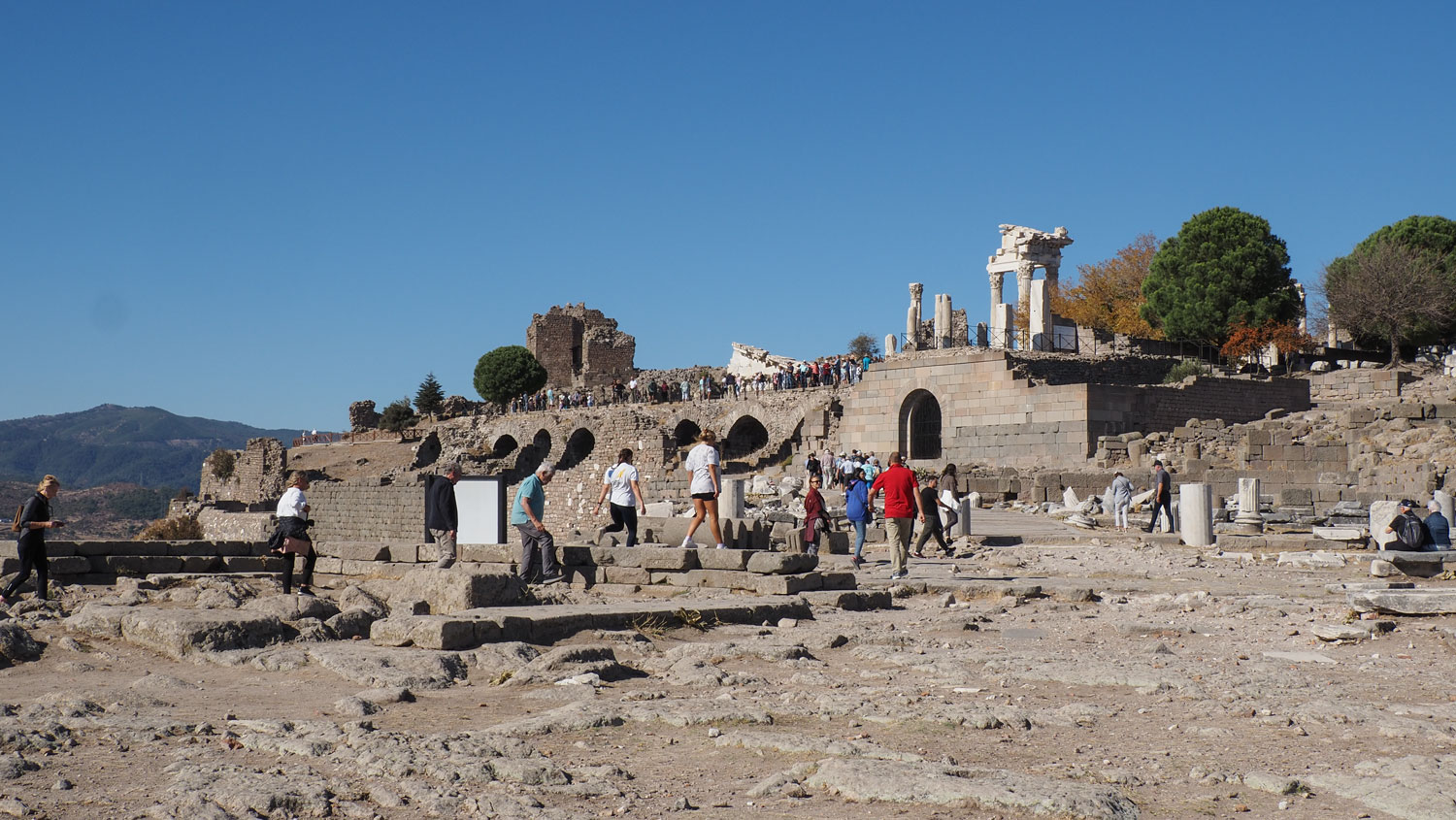
We took a cable car back down the hill and the bus took us to Asclepeion.
Asclepeion was one of the Greek "healing temples". Medicine was not very well developed at that time and the healing was mostly devoted to changes in lifestyle. One of their beliefs was that the sick person would be visited by Asclepius, or one of his helpers, in their dreams, who would tell them what they needed to do to regain their health. Upon waking, they would relate their dreams to one of the "doctors" who would interpret their dreams and prescribe lifestyle changes. A sick person wishing to enter for treatment was interviewed, and if he was too ill, he was refused. Pregnant women were not allowed in, either. Death was not allowed, but if one did perish, he was taken out quietly, by the rear entrance.
It was a big place. Here's a map, showing the major parts of the site.
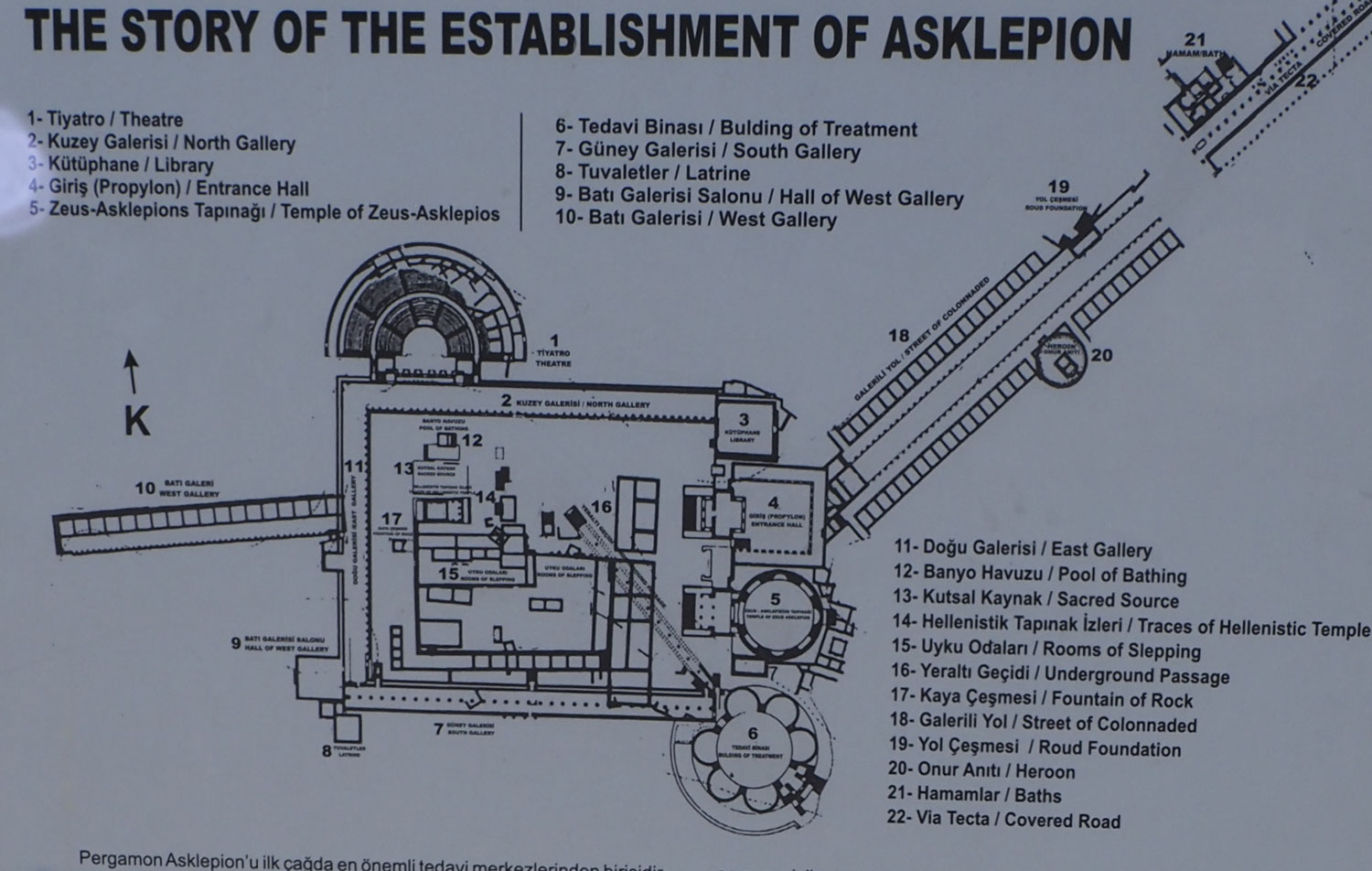
And a drawing of what the site must have looked like.
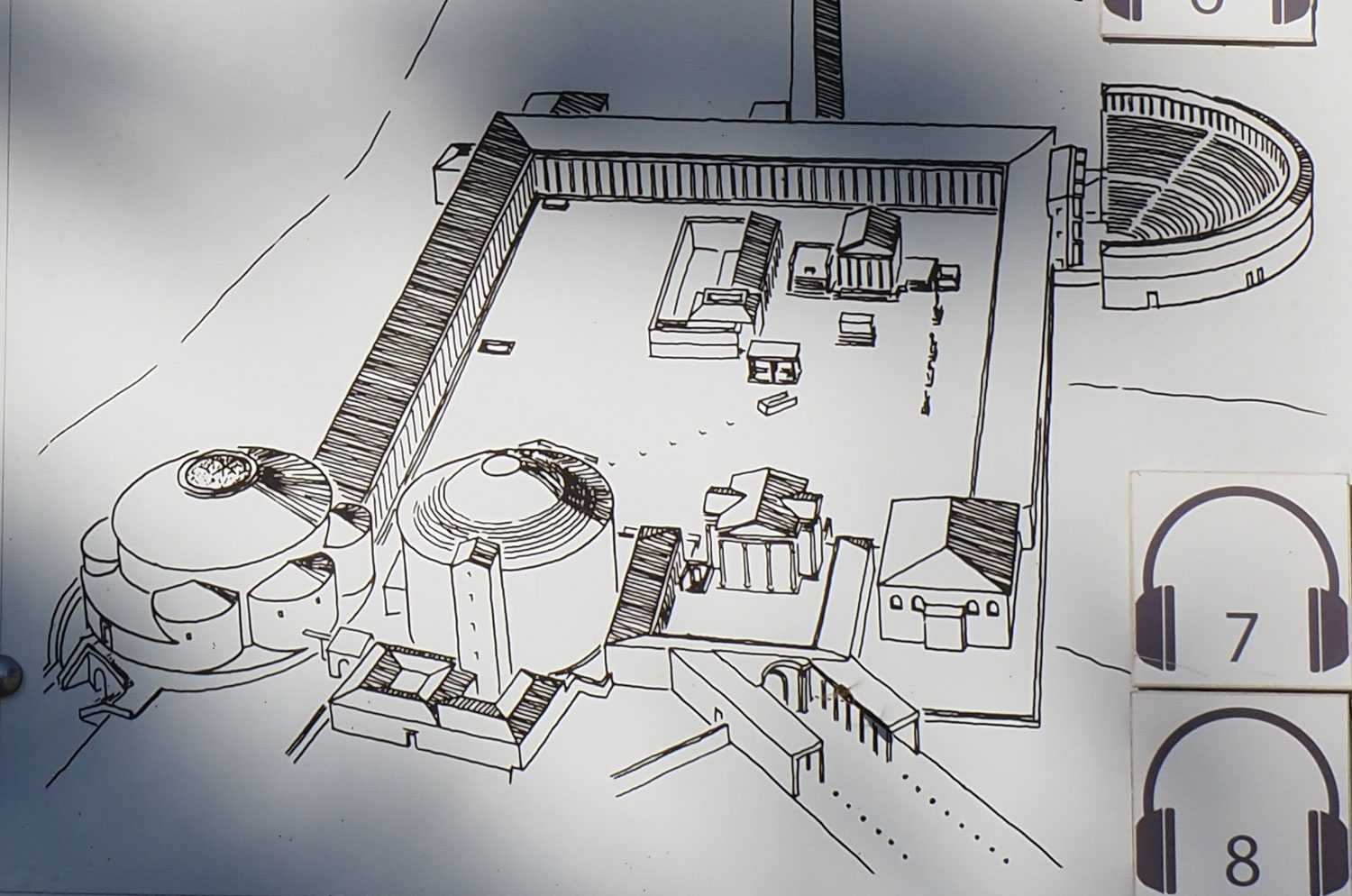
The walkway to the site.
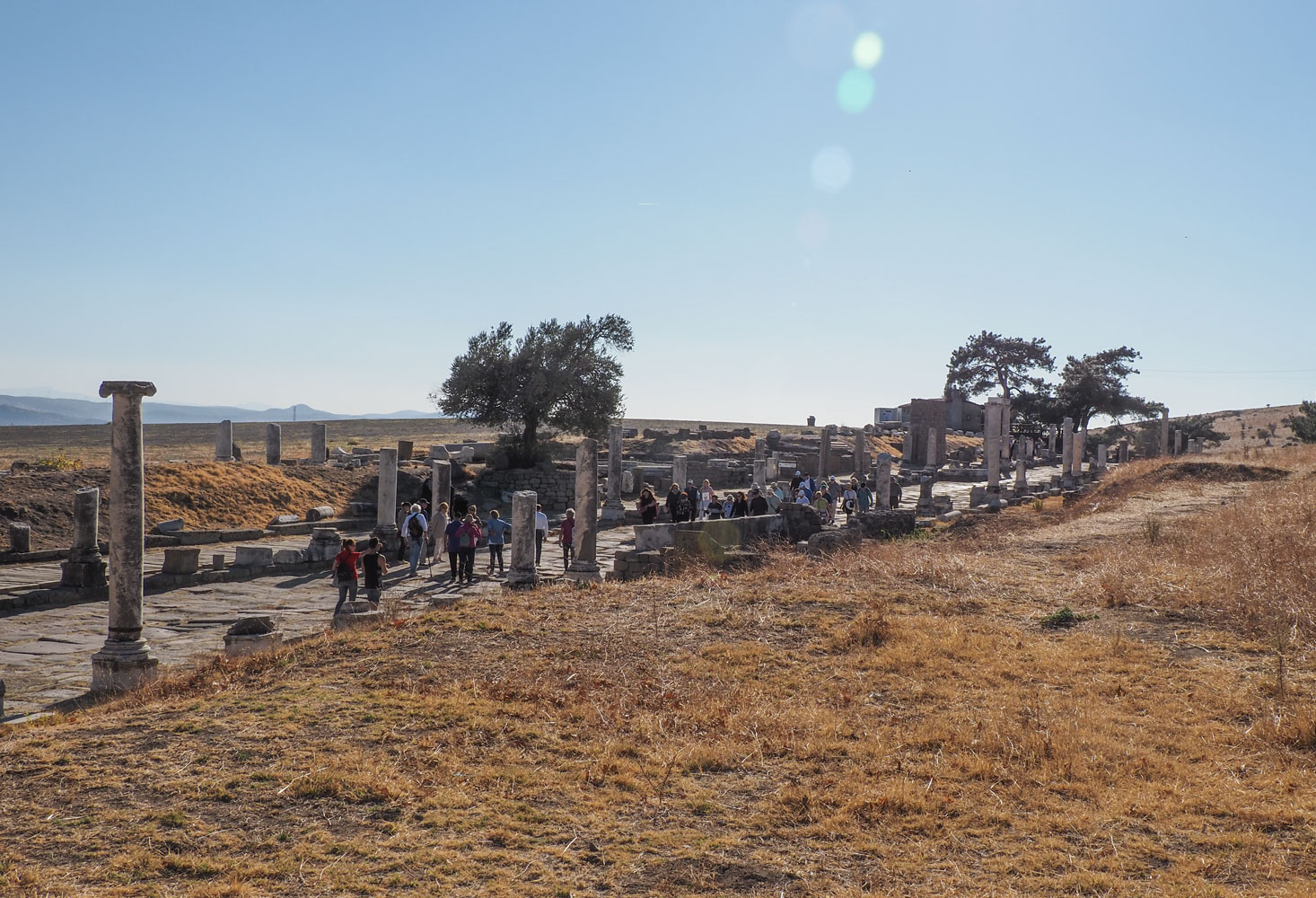
The remains of one side of the temple. In the background you can see a small bit of the theatre.

We went through a tunnel toward two tank-looking structures.

This is what that area looks like now.

We returned to the main part of the temple through a different tunnel.
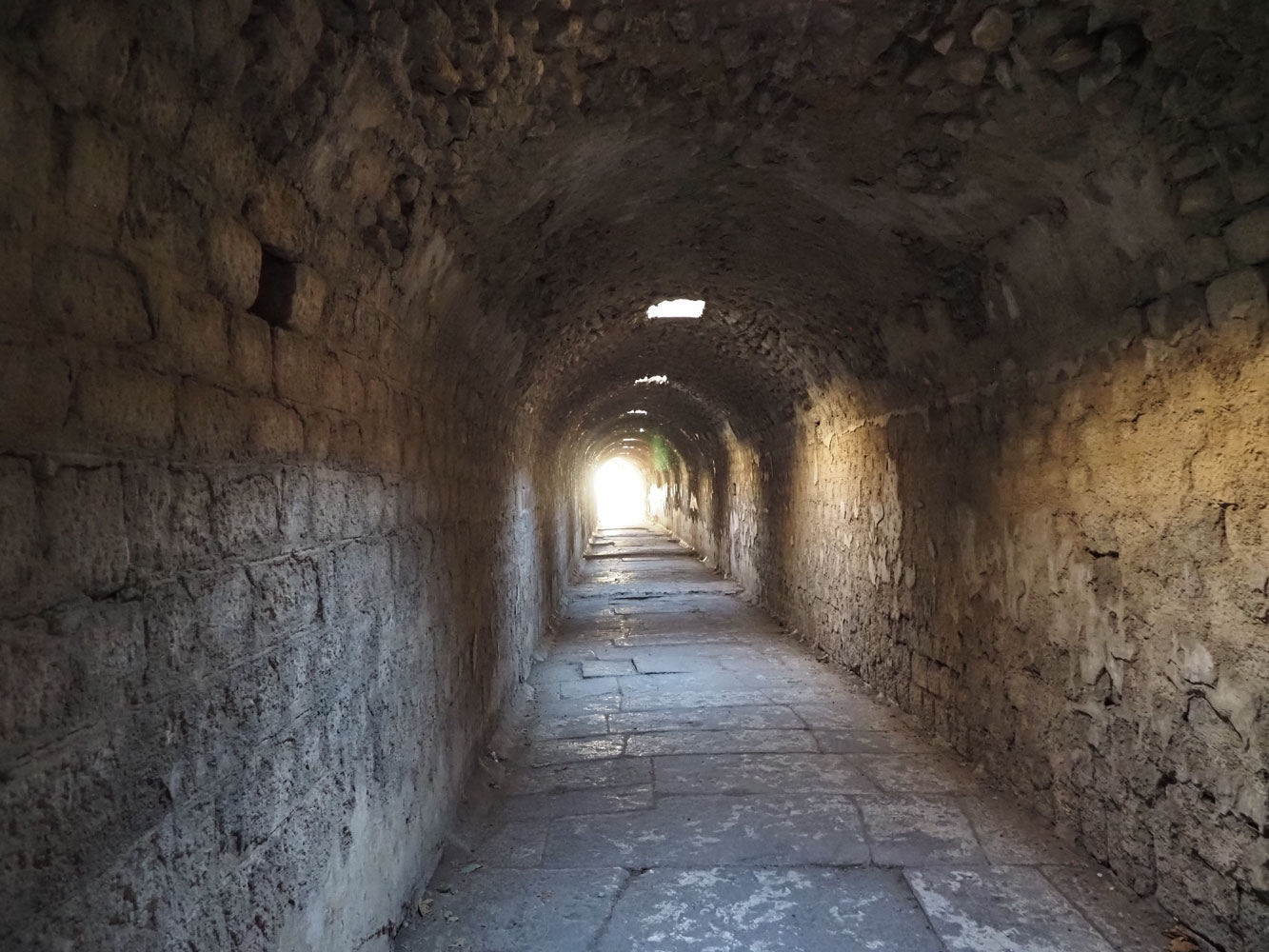
A view of the theatre, from the main temple.

A view of that same temple column area, with Judy.
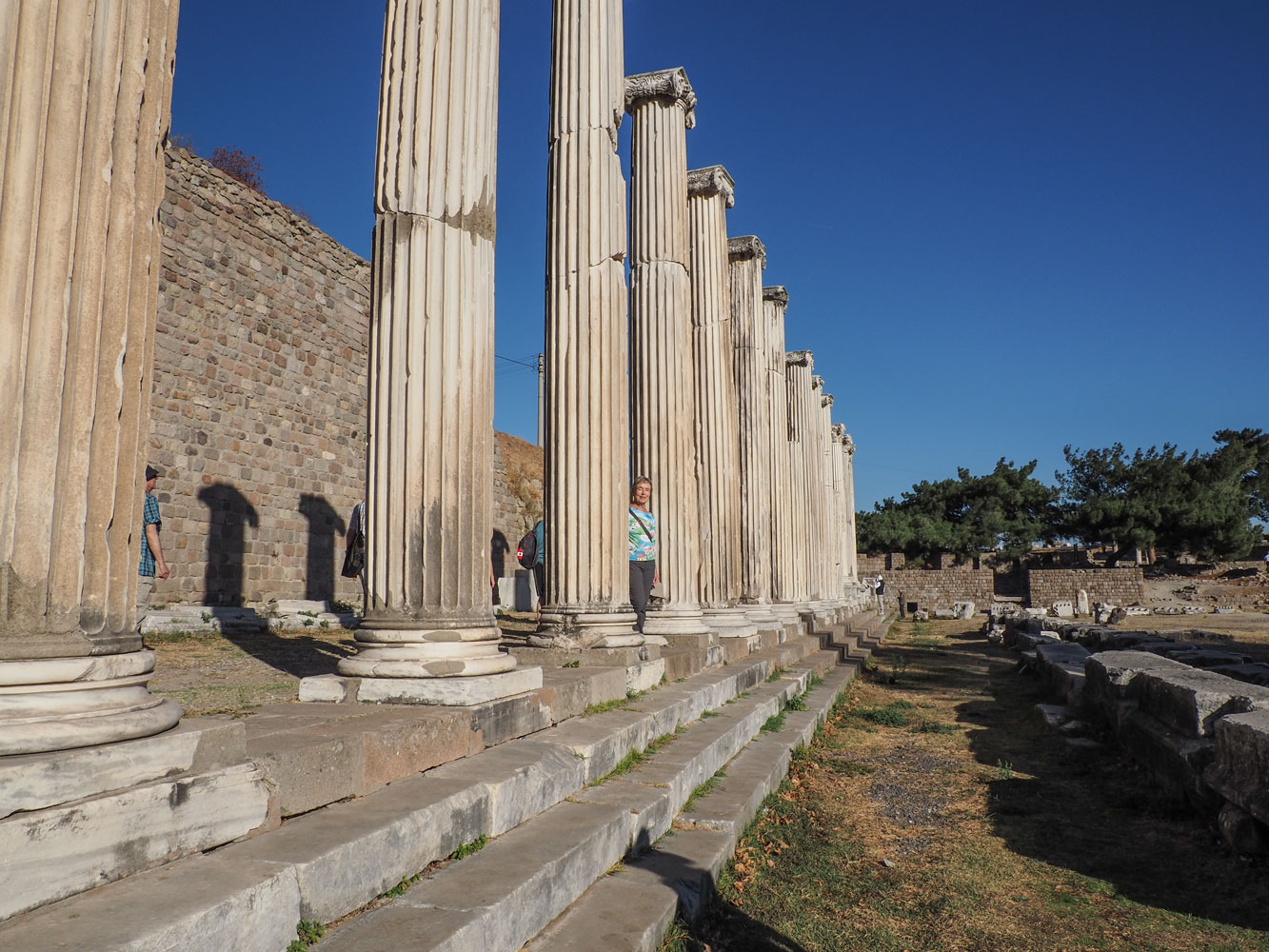
A closer view.
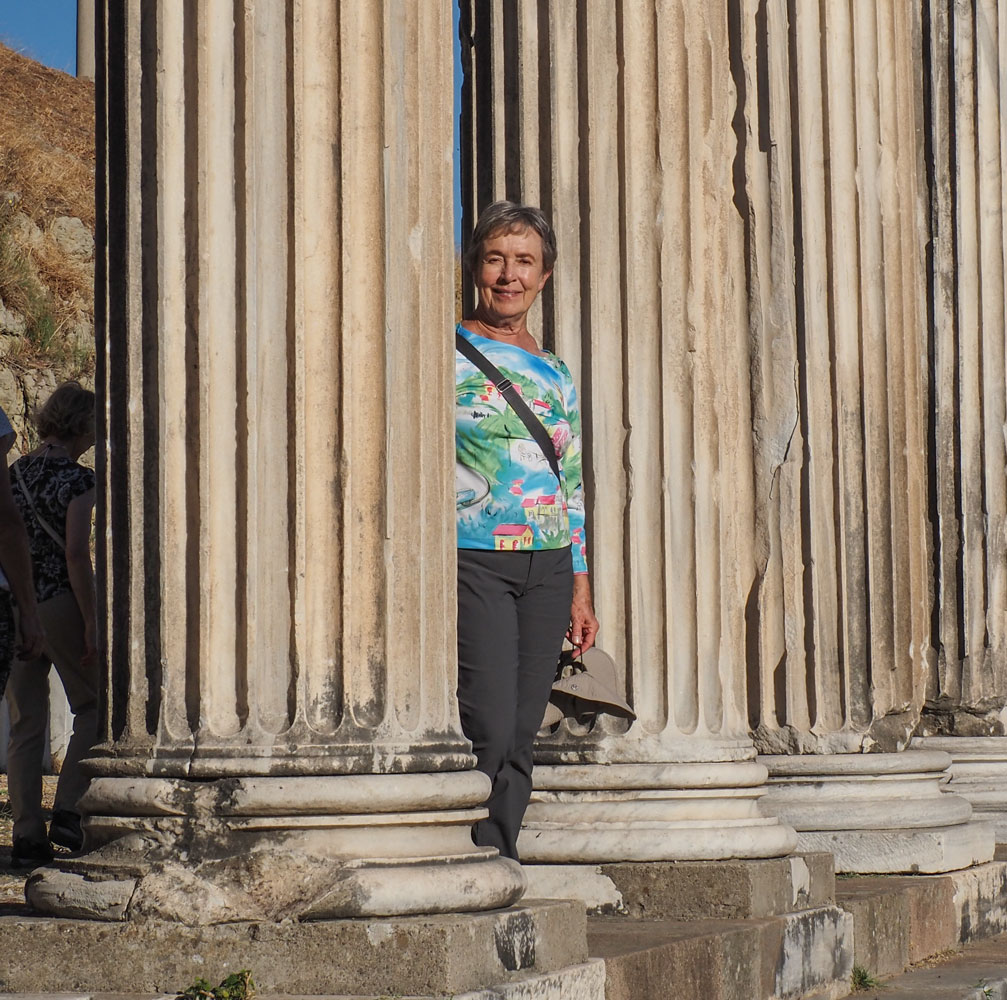
Then we walked to the bus, for our trip back to the ship. Since the excursion didn't start until after noon, we returned a bit too late to attend the beginning of the lecture on Ephesus, which we'll visit tomorrow.
Then it was dinner and to bed. We're still not properly sleep adjusted yet.